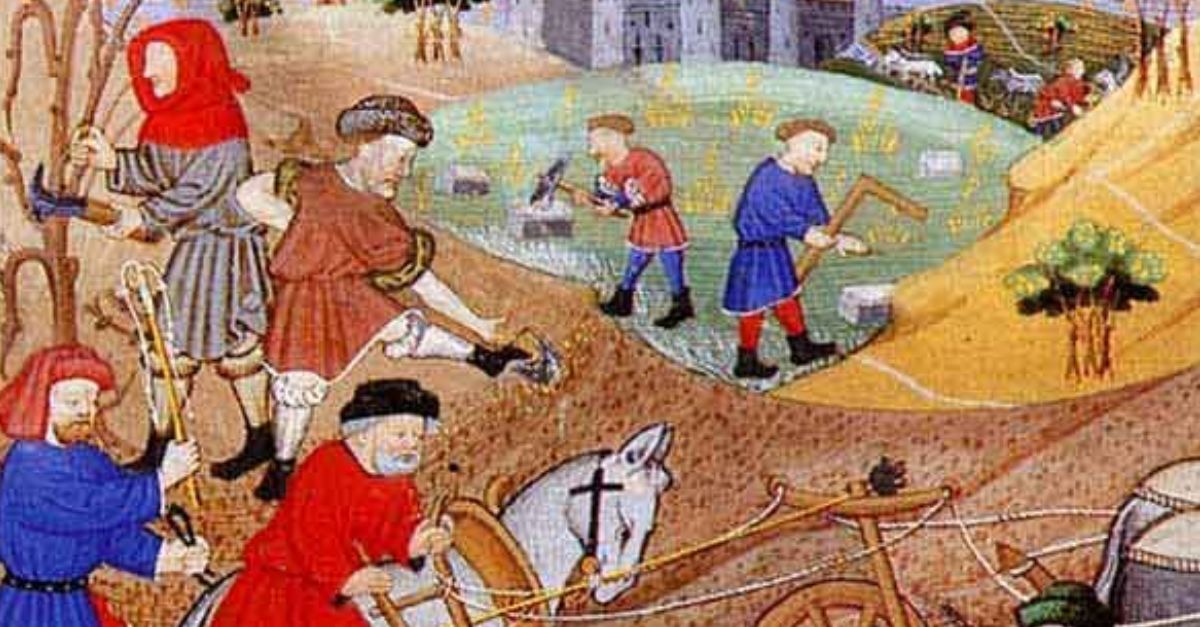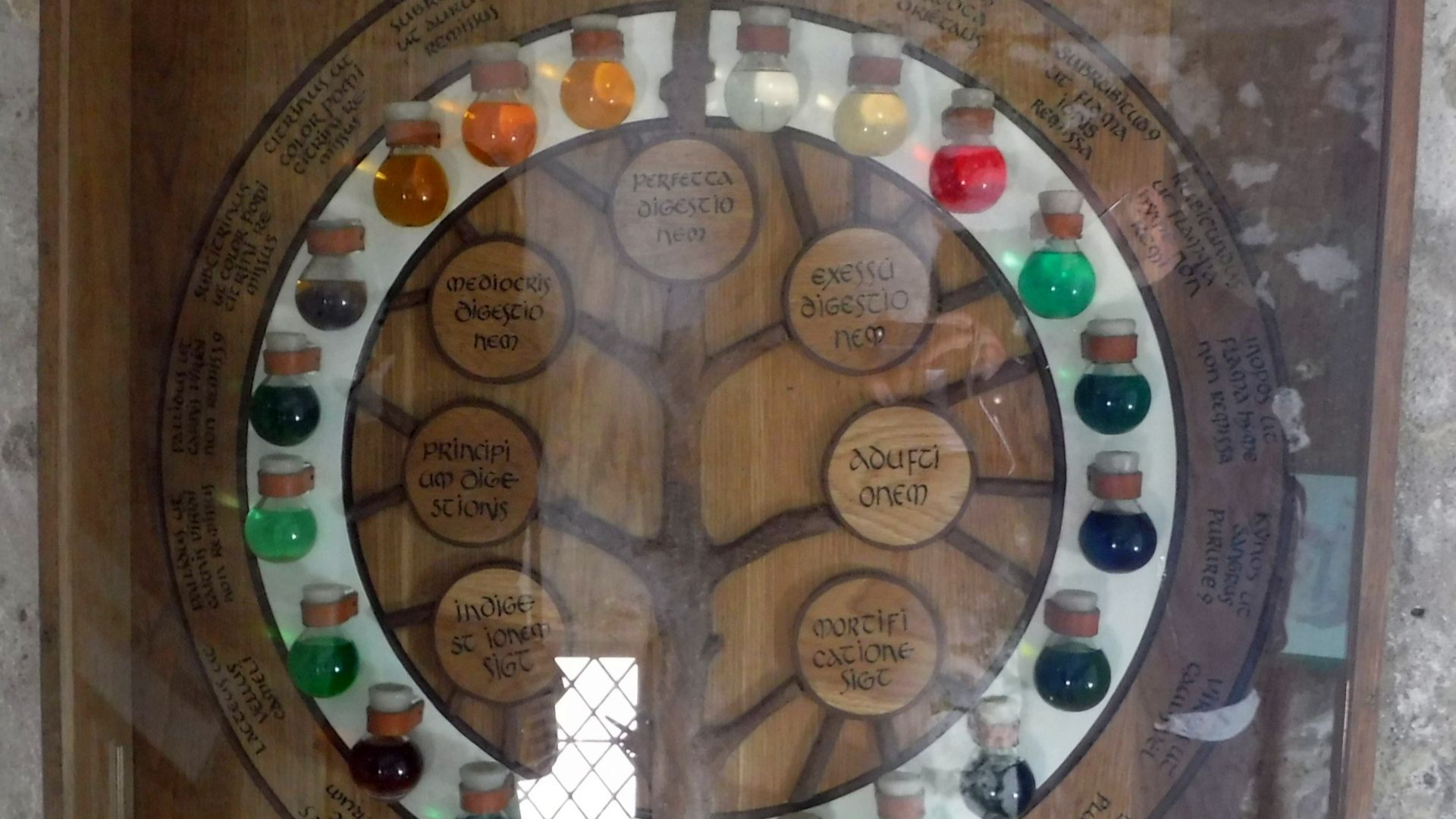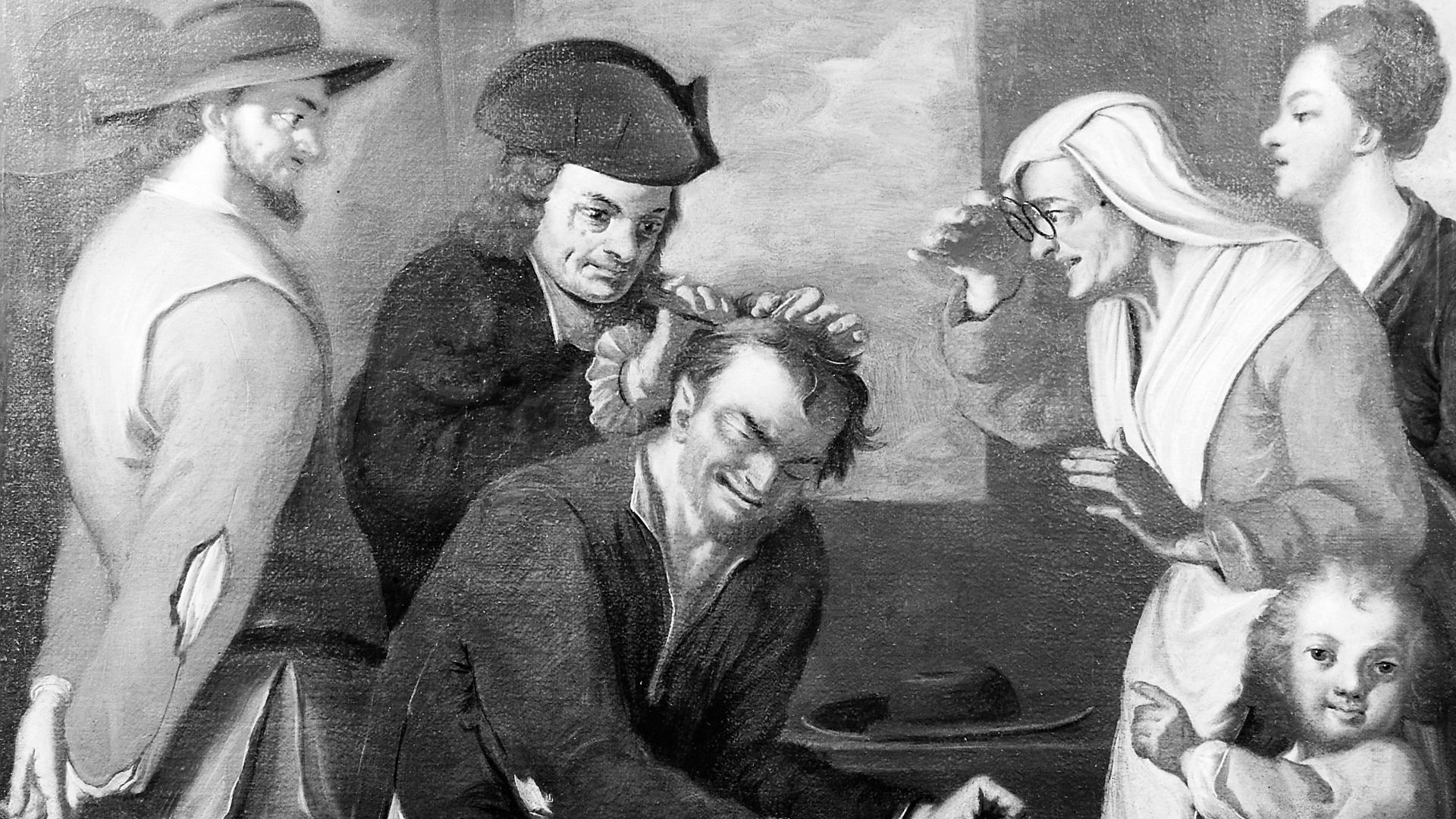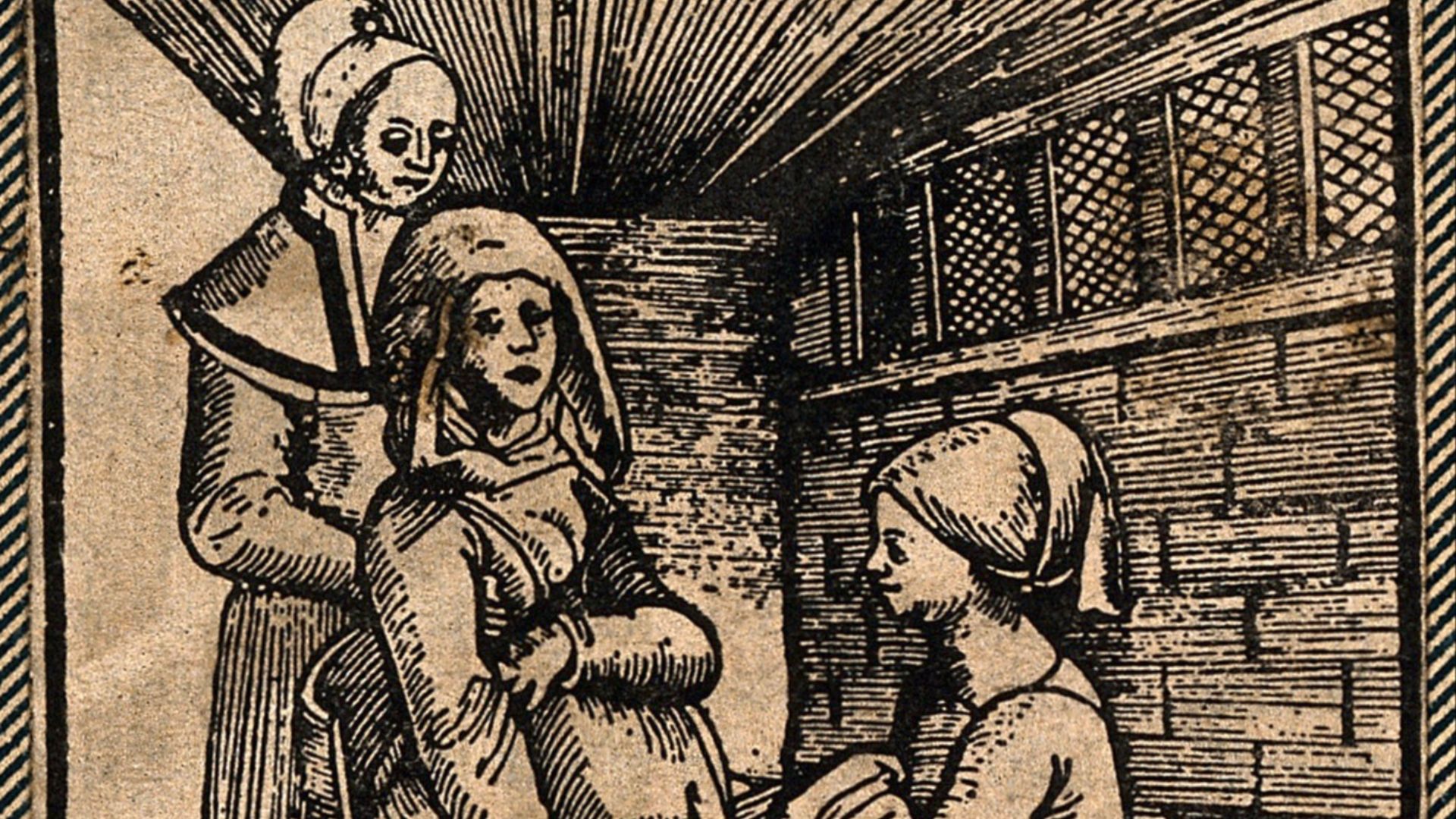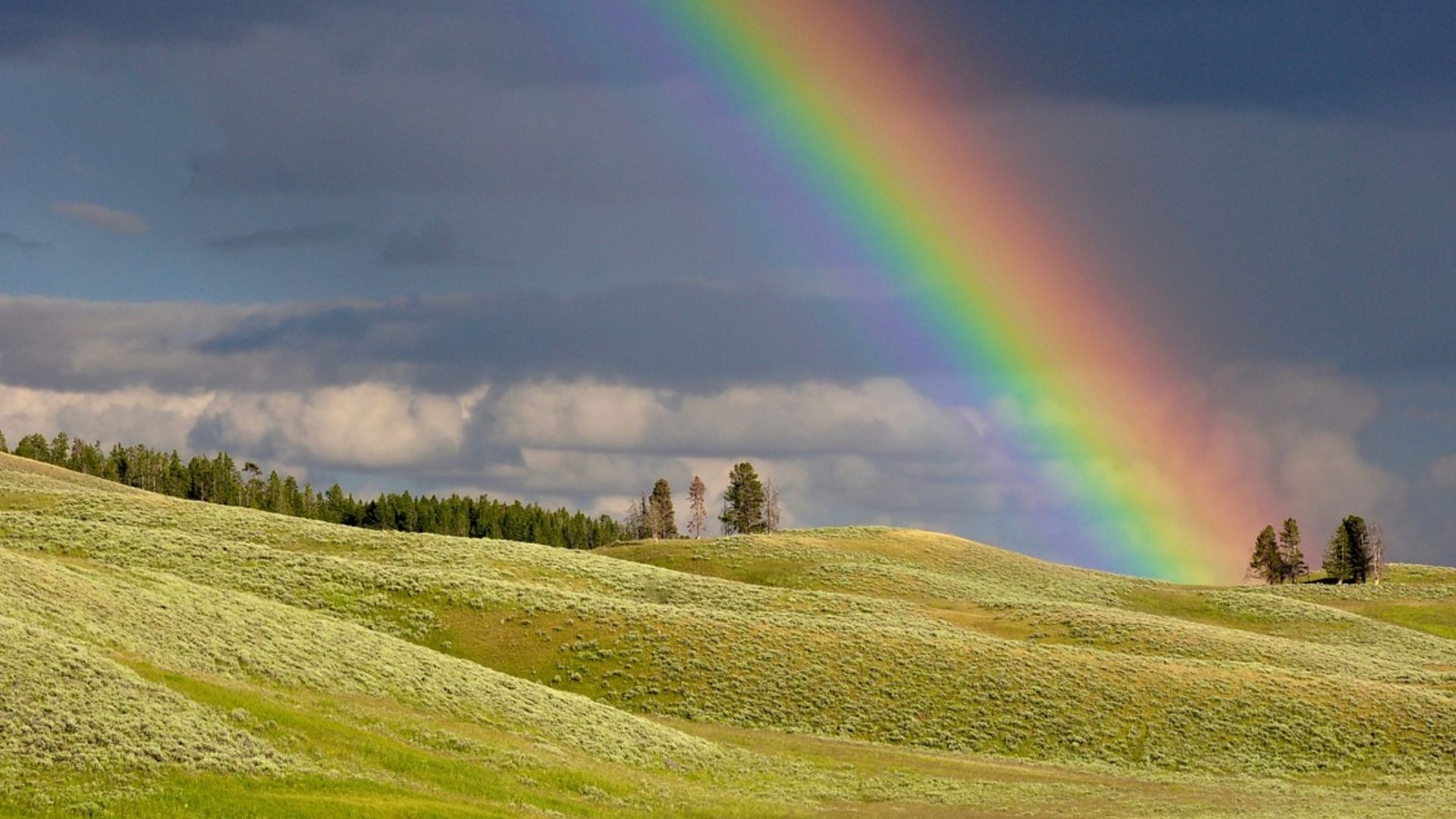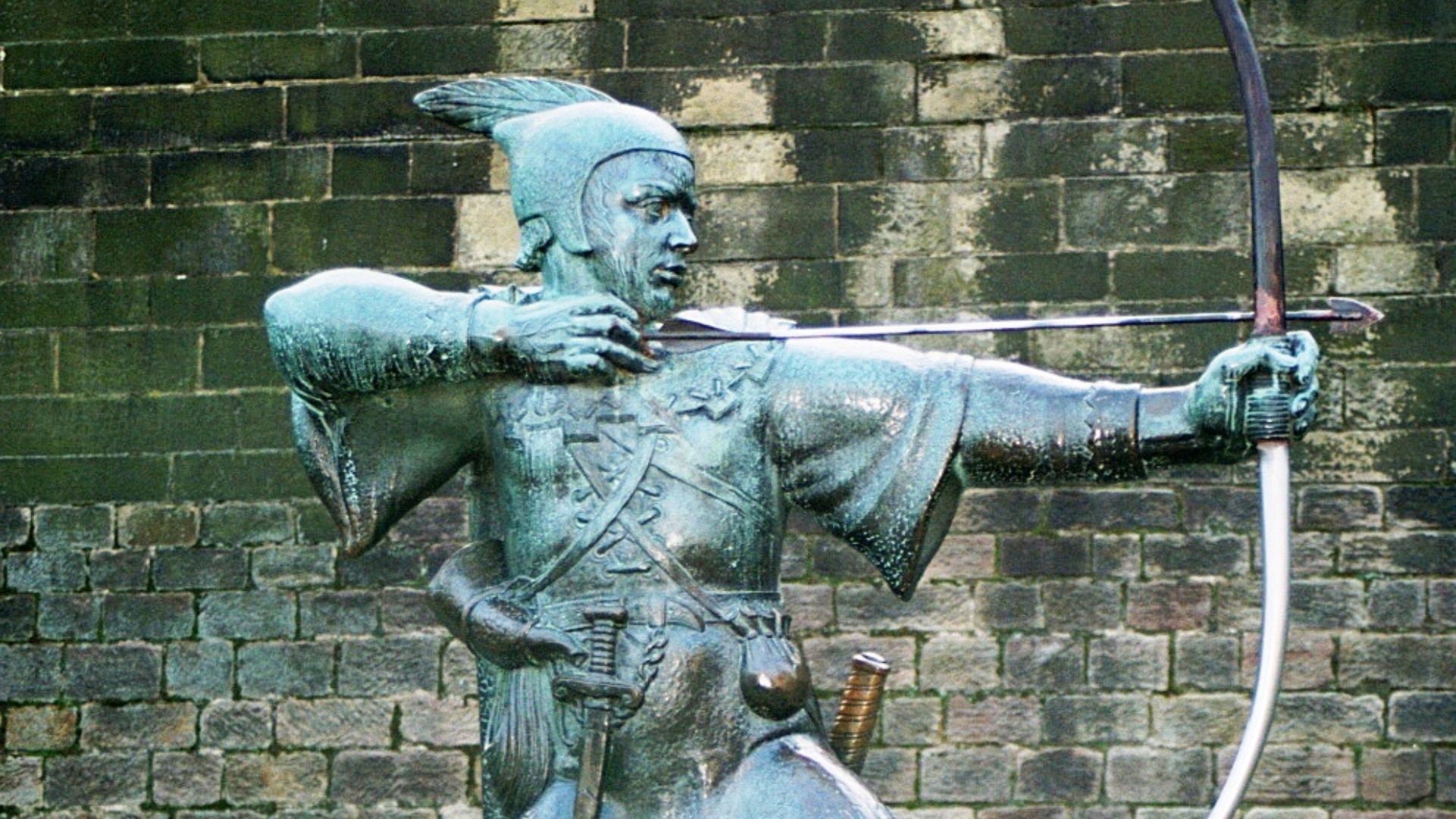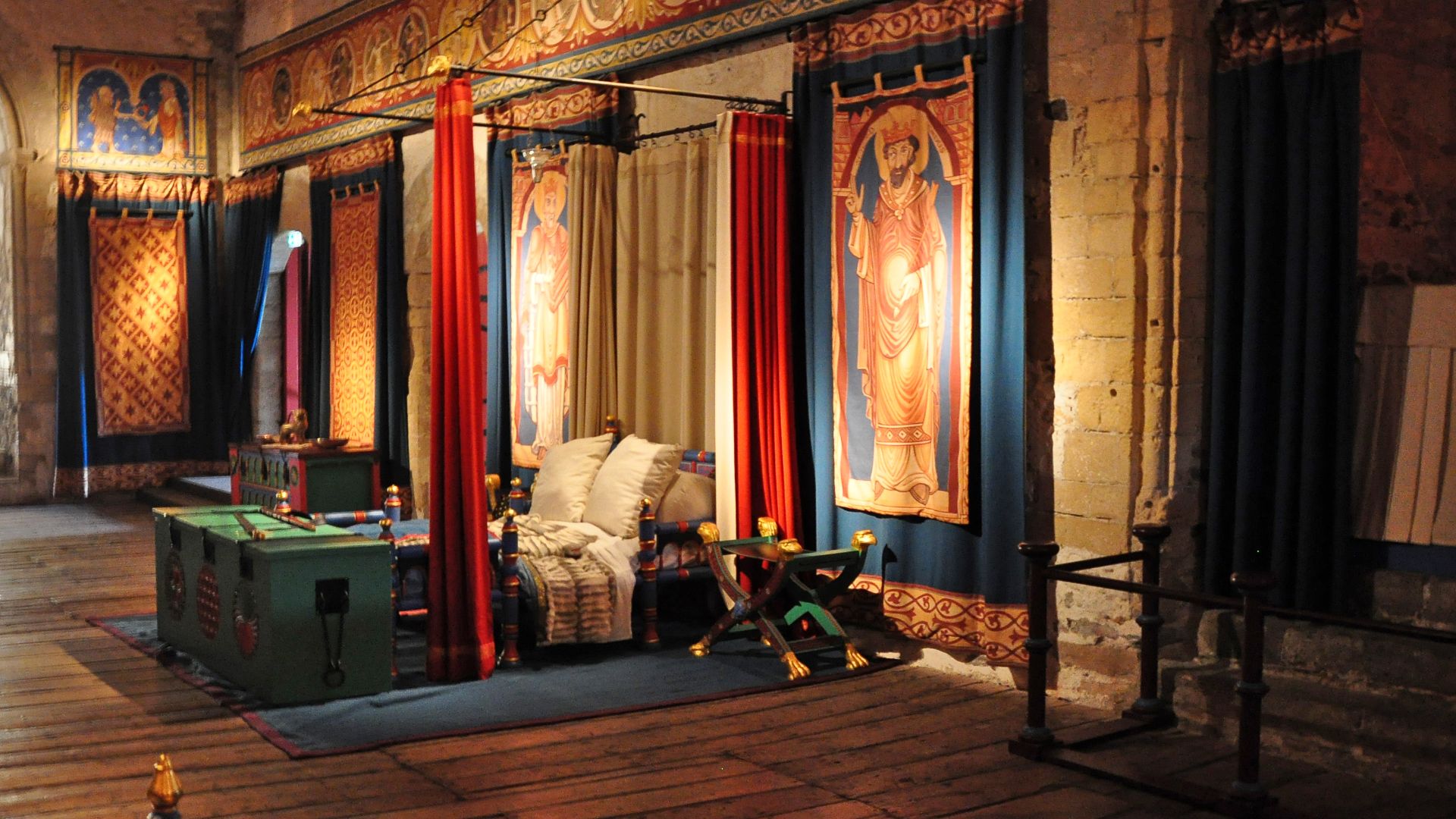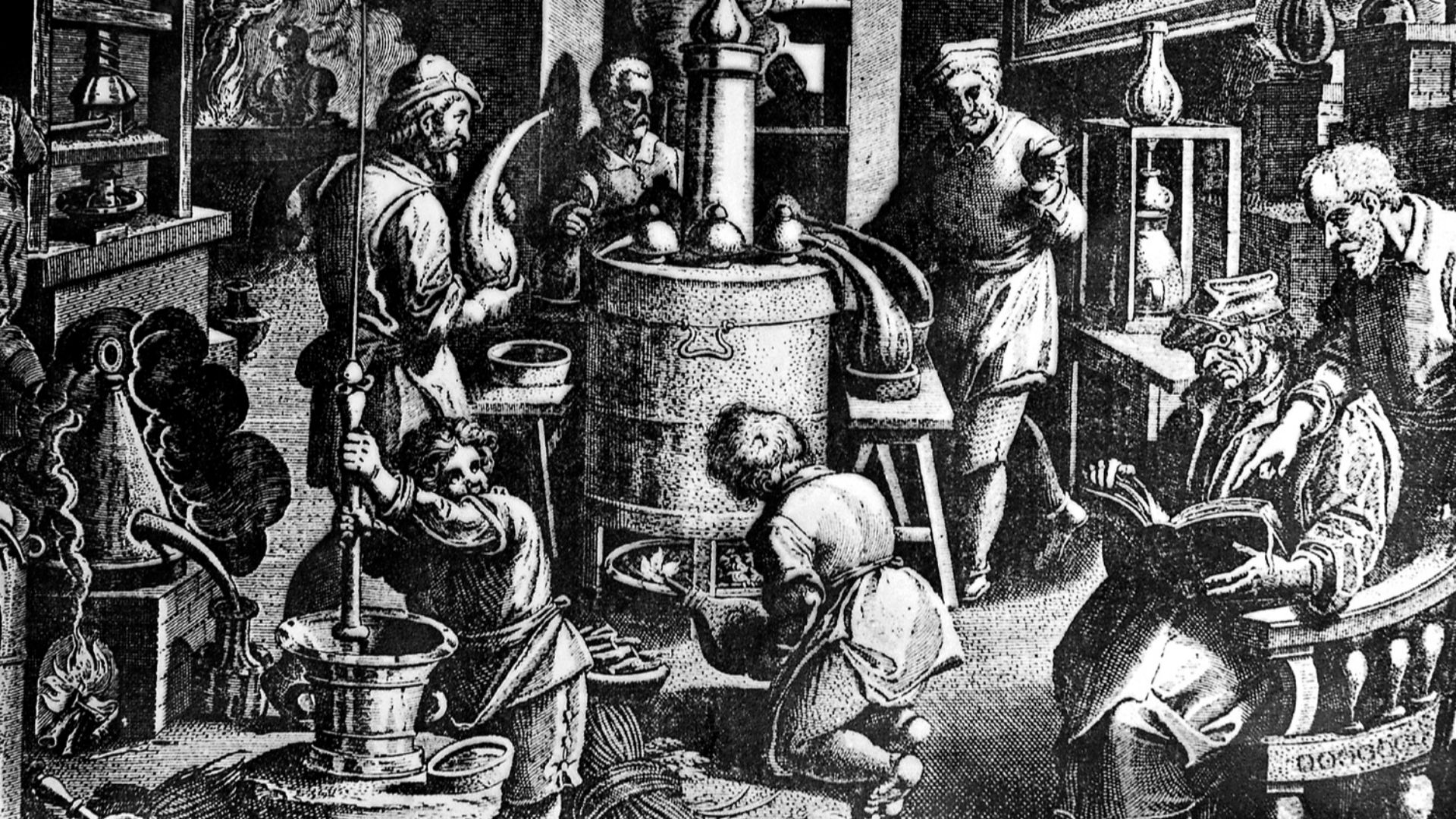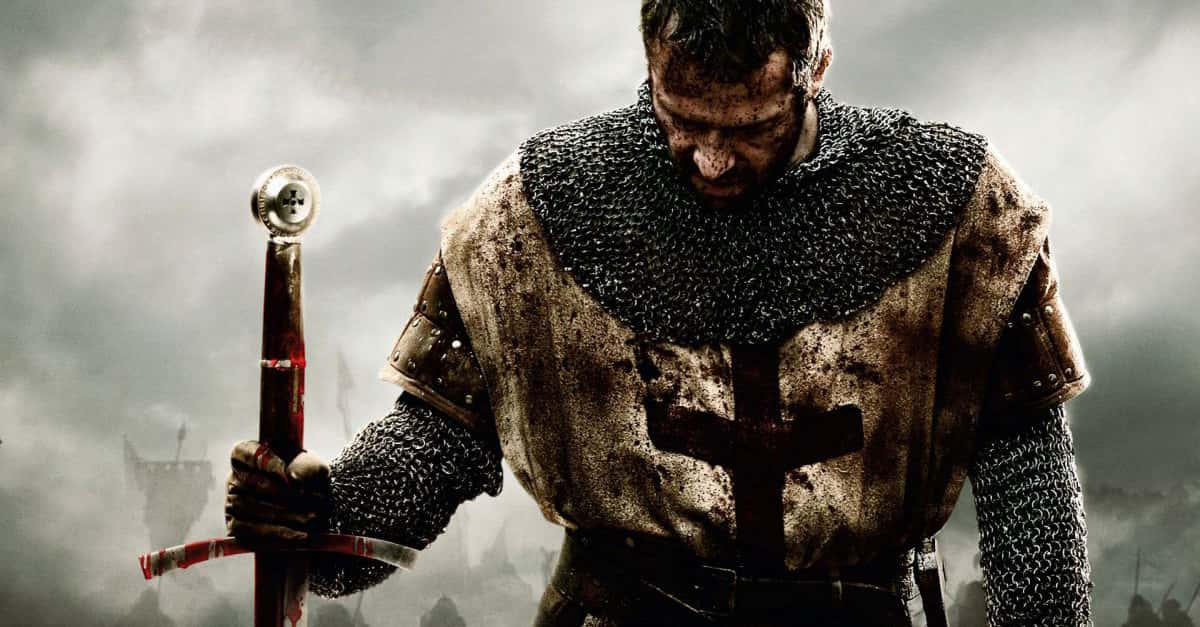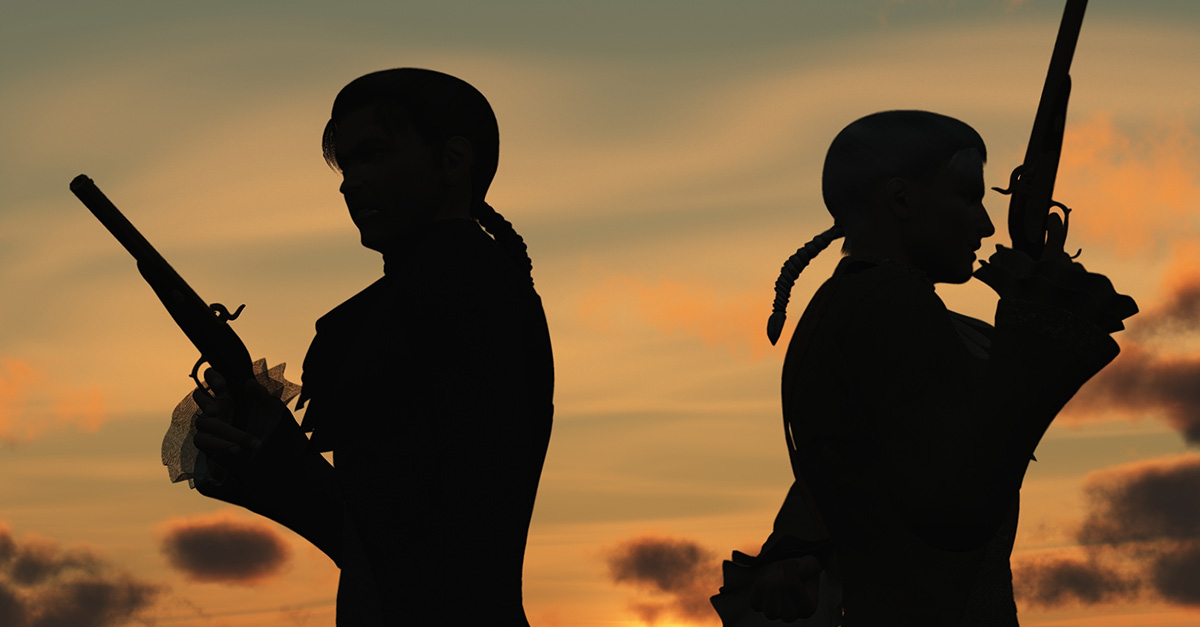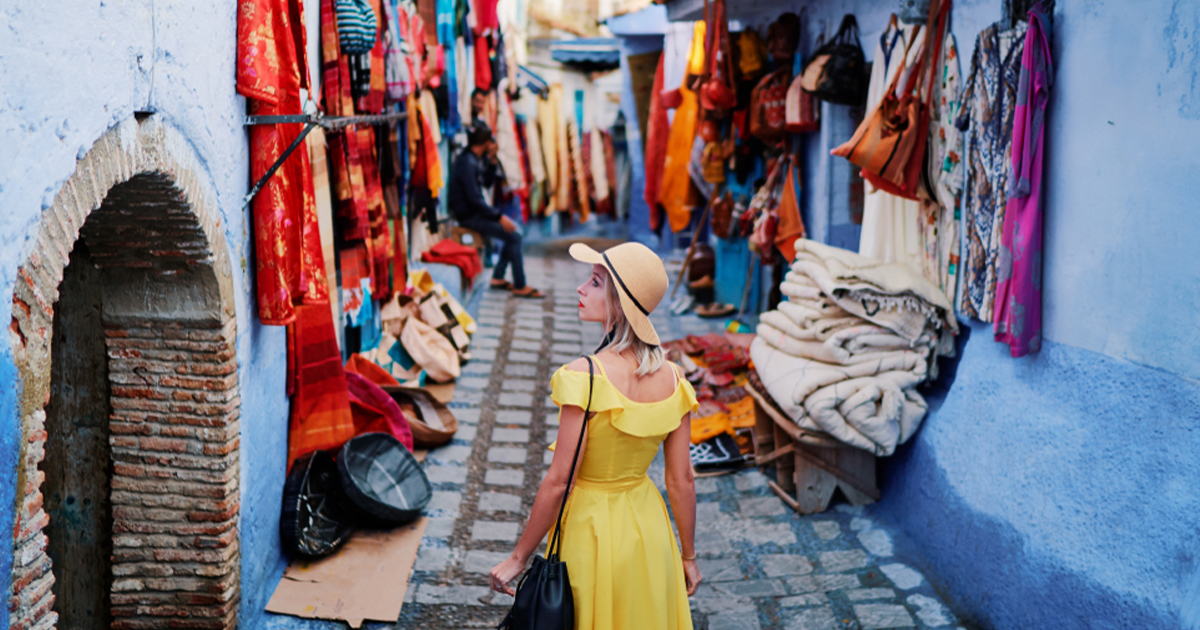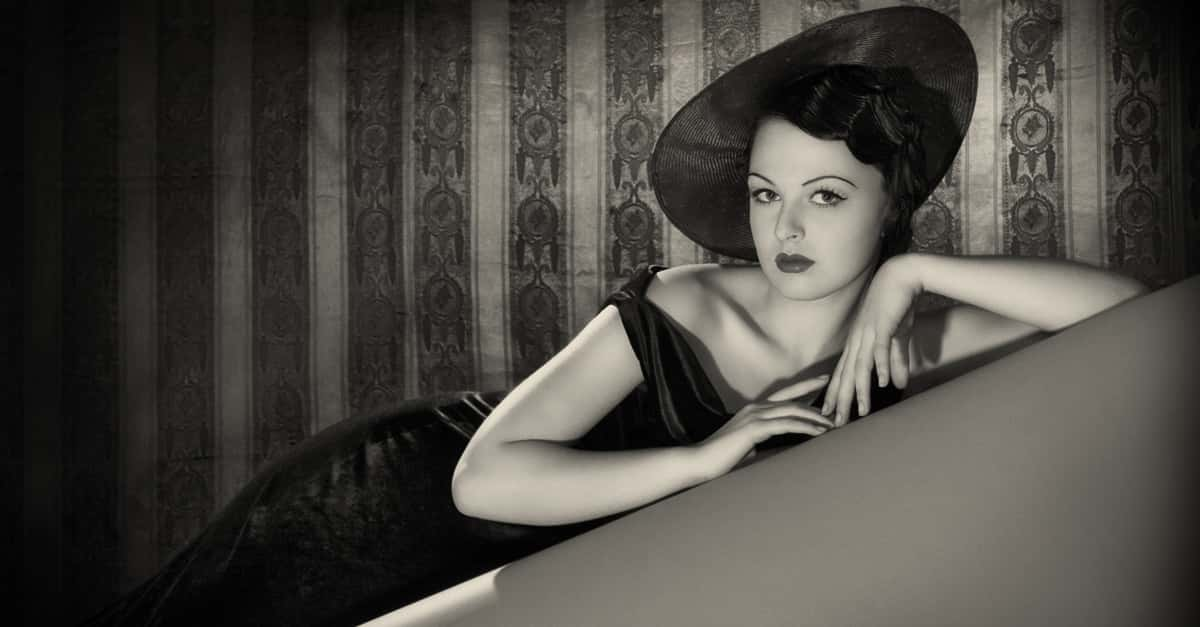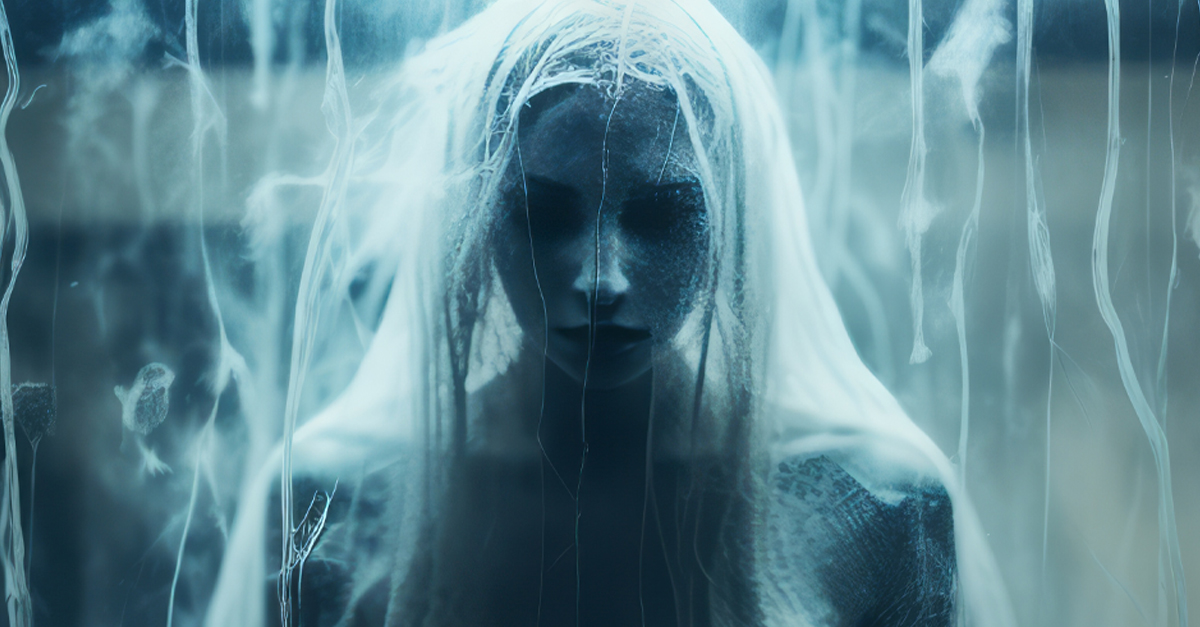A Time Stranger Than Fiction
Medieval life was raw and sometimes downright bizarre. Beyond kings and cathedrals, the era brimmed with customs that seem unthinkable today, but they really happened.
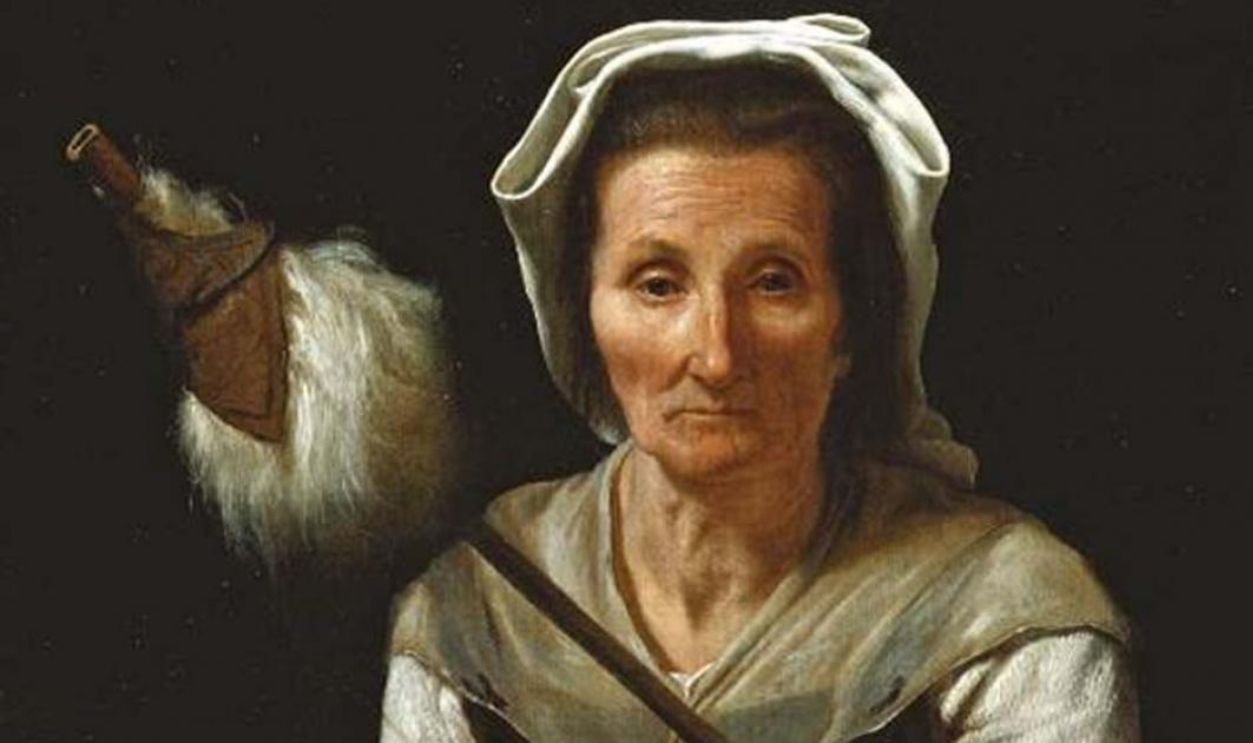
Doctors Diagnosed Illness By Tasting Urine
Physicians believed bodily fluids held clues to internal health. Urine was inspected for smell and taste. Sweetness might indicate diabetes. Medical charts called "urine wheels" helped match samples with conditions. This was standard across medieval Europe.
Leech Therapy Was A Routine Prescription
Bloodletting was central to medieval medicine, and leeches were a popular tool. Doctors believed removing "bad blood" could balance the humors and treat anything from fever to mental illness. Apothecaries stocked leeches, and aristocrats often kept them at home for personal use.
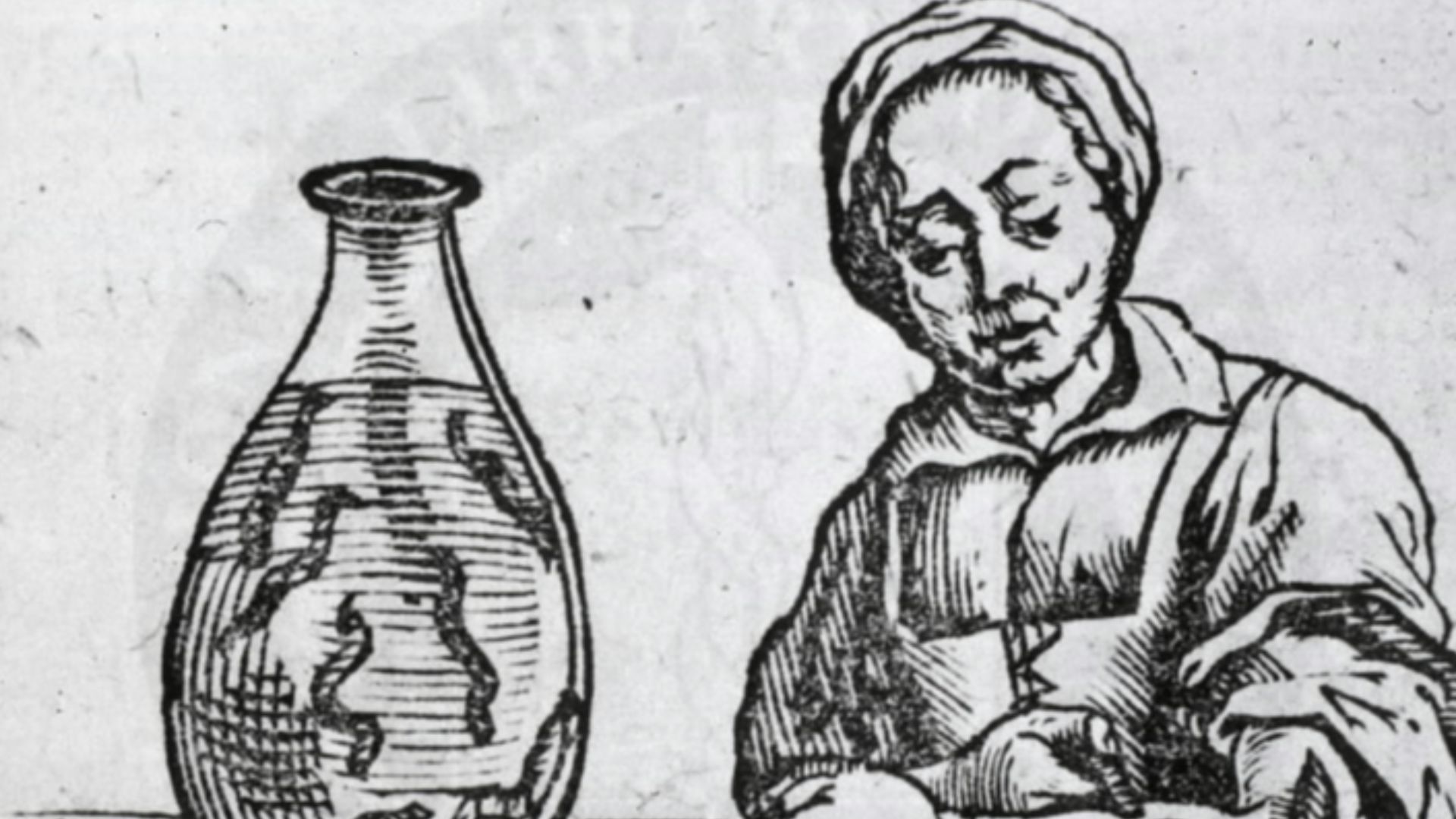 Bossche, Guillaume van den, Wikimedia Commons
Bossche, Guillaume van den, Wikimedia Commons
Trepanation Involved Drilling Holes Into Skulls
To relieve pressure or release "evil spirits," surgeons used to bore holes into patients' skulls. This risky procedure, called trepanation, was surprisingly standard. Skulls from the era show bone regrowth, which meant some patients survived. It was used for seizures and behavioral changes.
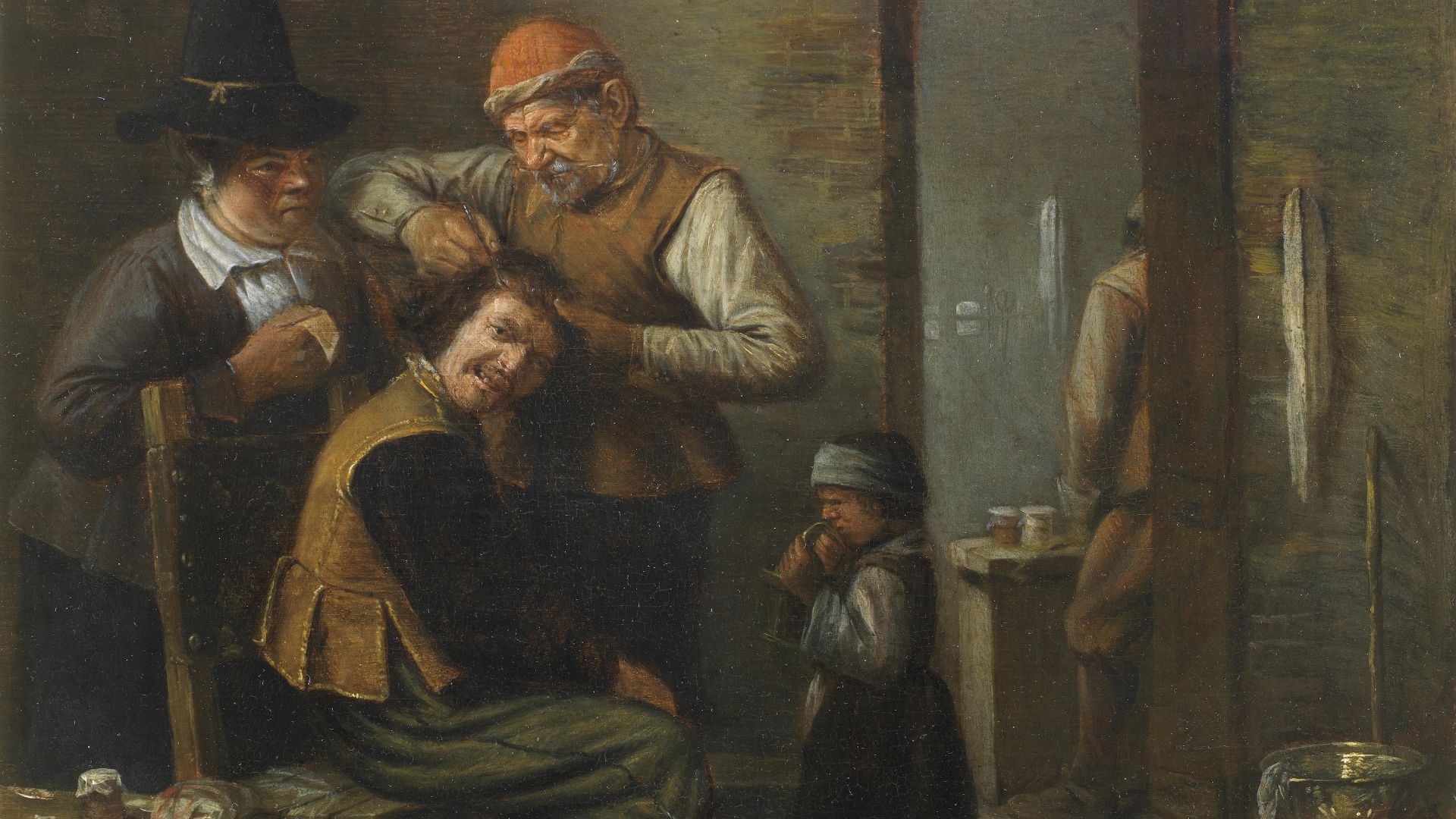 Joos van Craesbeeck, Wikimedia Commons
Joos van Craesbeeck, Wikimedia Commons
Bubonic Plague Was Blamed On "Bad Air"
Long before germ theory, people believed diseases came from foul-smelling air, or "miasma". During plague outbreaks, cities burned aromatic herbs, and doctors wore beaked masks stuffed with spices. While the real culprit was fleas on rats, this airborne theory guided much of medieval public health.
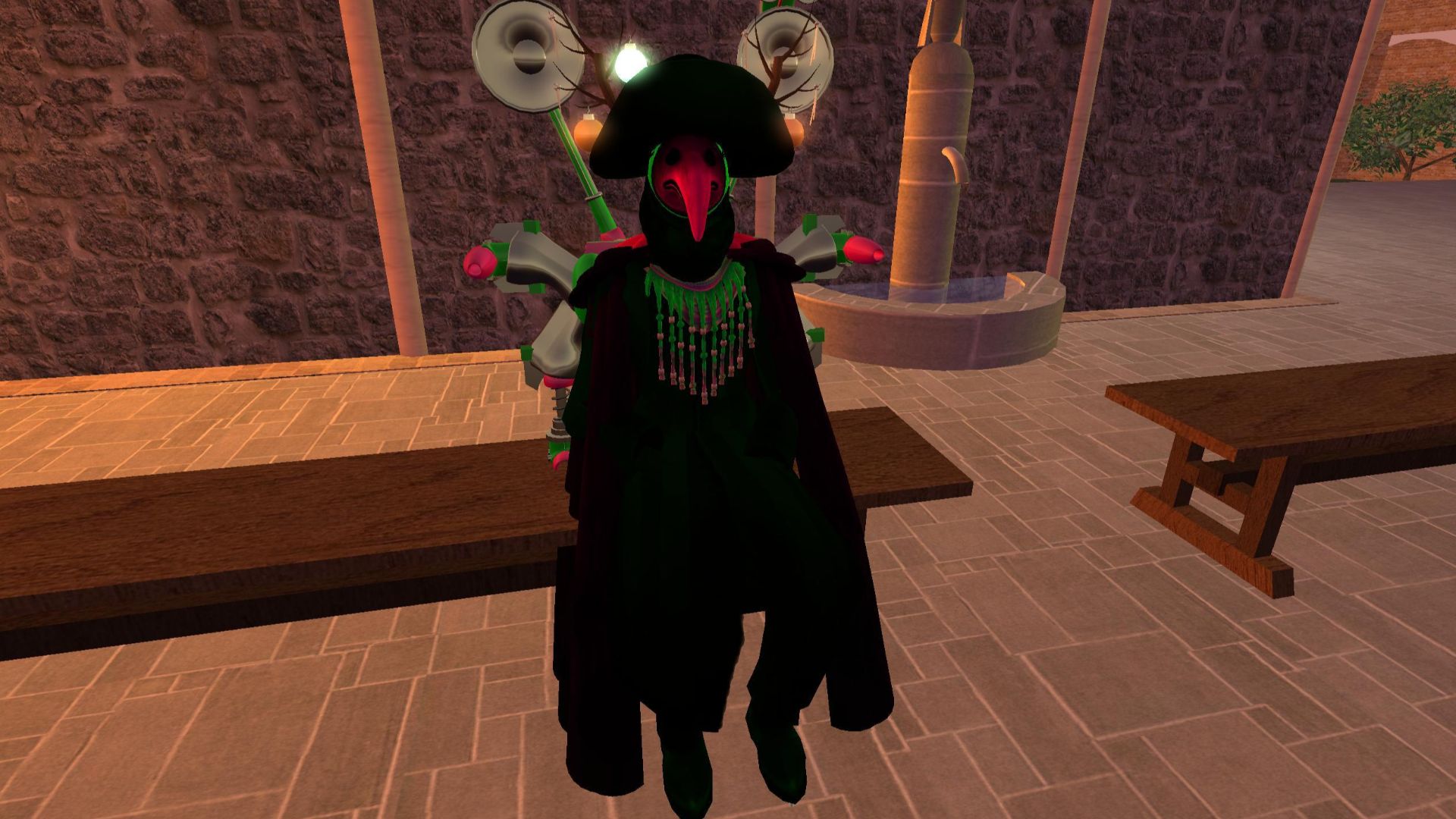 Flickr: Torley, Wikimedia Commons
Flickr: Torley, Wikimedia Commons
Barber-Surgeons Cut Hair—And Limbs
Barbers did more than trim hair; they also pulled teeth and amputated limbs. Although they lacked formal training, they served as the primary medical providers for commoners. Their striped poles, red for blood and white for bandages, symbolized this grisly dual role.
Toothaches Were Blamed On Demonic Worms
This folk theory was accepted by commoners and educated physicians and even appeared in formal medical texts. To relieve dental pain, people believed worms had burrowed into teeth. As a remedy, they burned pungent herbs near the mouth in hopes of smoking them out.
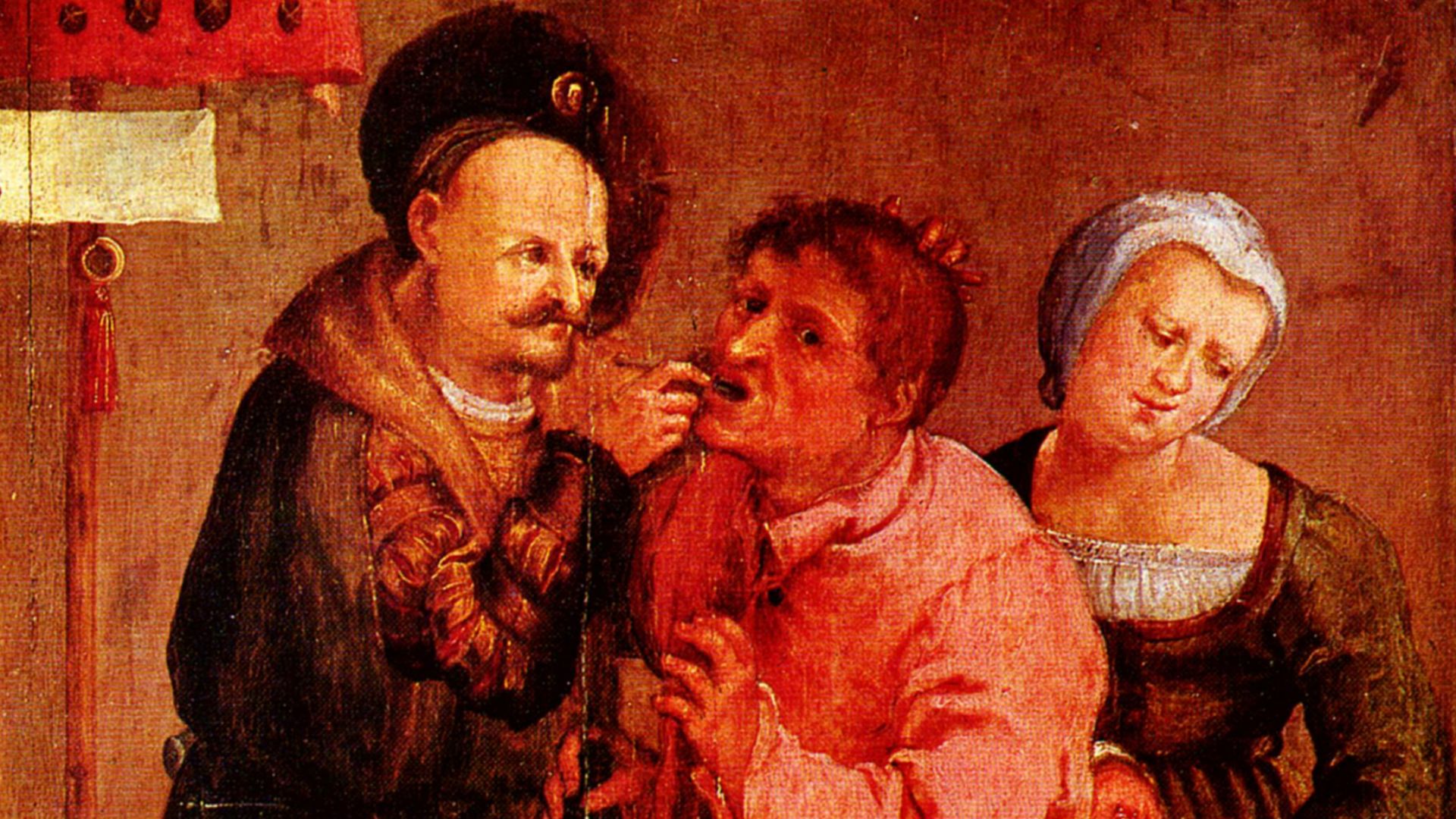 Johann Liss / After Lucas van Leyden, Wikimedia Commons
Johann Liss / After Lucas van Leyden, Wikimedia Commons
People Avoided Baths For Fear Of Illness
After the Black Death, fear of disease led many to avoid bathing, though it had been common earlier. Public bathhouses declined as hot water was thought to open pores to illness. Still, people used scented clothes and maintained some hygiene habits like hand-washing.
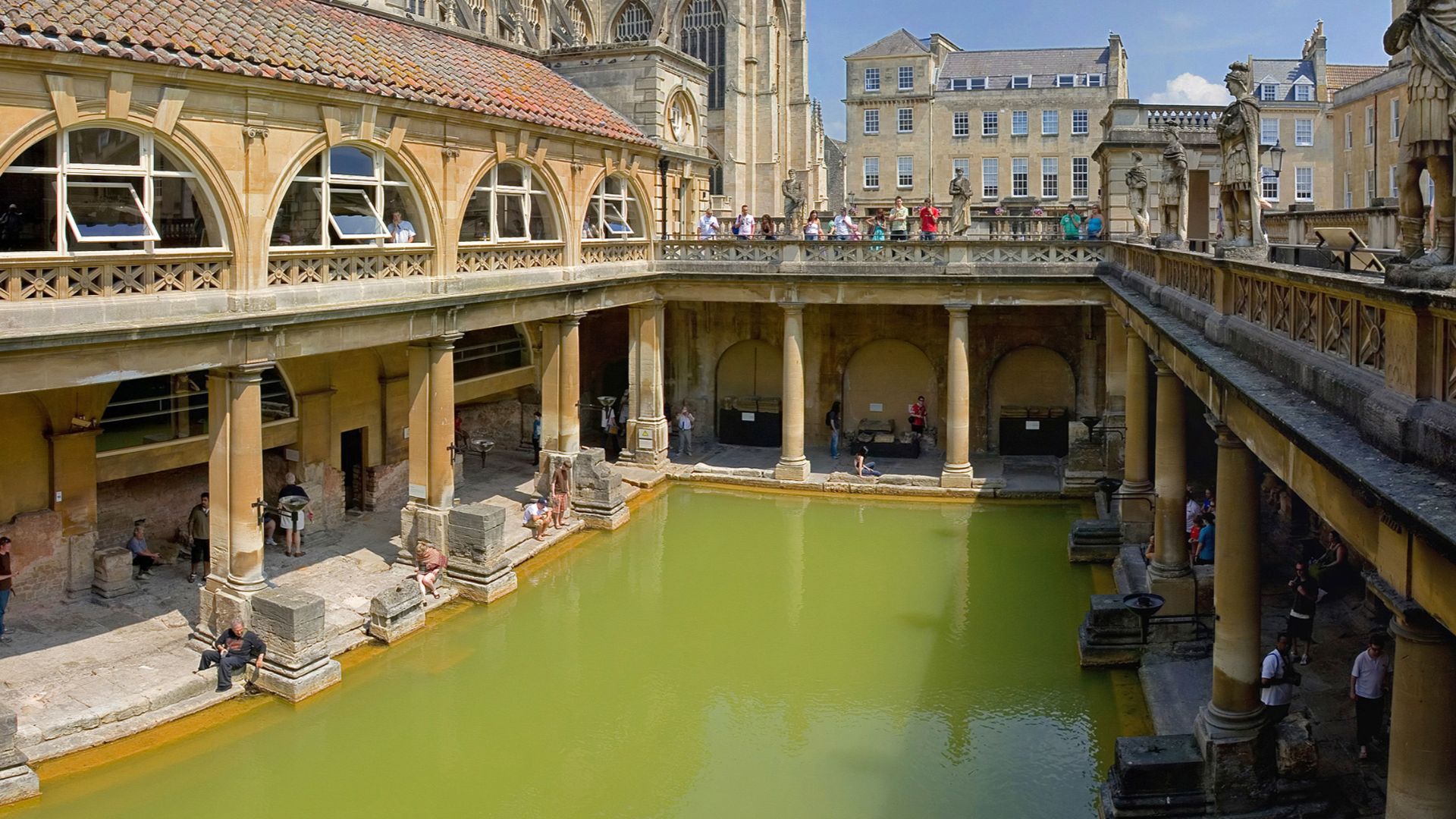 Diliff, CC BY 2.5, Wikimedia Commons
Diliff, CC BY 2.5, Wikimedia Commons
Bad Weather Was Blamed On Sin And Sorcery
Medieval Europeans often linked storms or droughts to divine punishment for sins like adultery or murder. Clergy led penance rituals to stop God’s wrath. Later, witches were also blamed for conjuring tempests to destroy crops, especially during famines or colder decades.
 Mathias Krumbholz, Wikimedia Commons
Mathias Krumbholz, Wikimedia Commons
Midwives Walked A Line Between Healers And Heretics
Midwives delivered babies and managed women's health, but they worked without church or university sanction. That independence made them targets. Some were revered, others accused of witchcraft. Their knowledge of herbs and remedies was both a lifeline and a liability in suspicious times.
Church Bells Were Rung To Stop Storms
Church towers treated bell-ringing as a sacred duty whenever storms approached. Priests climbed up to ring consecrated bells by believing the sound could scatter storm clouds and ward off demons. By doing so, they hoped to protect both homes and vulnerable crops below.
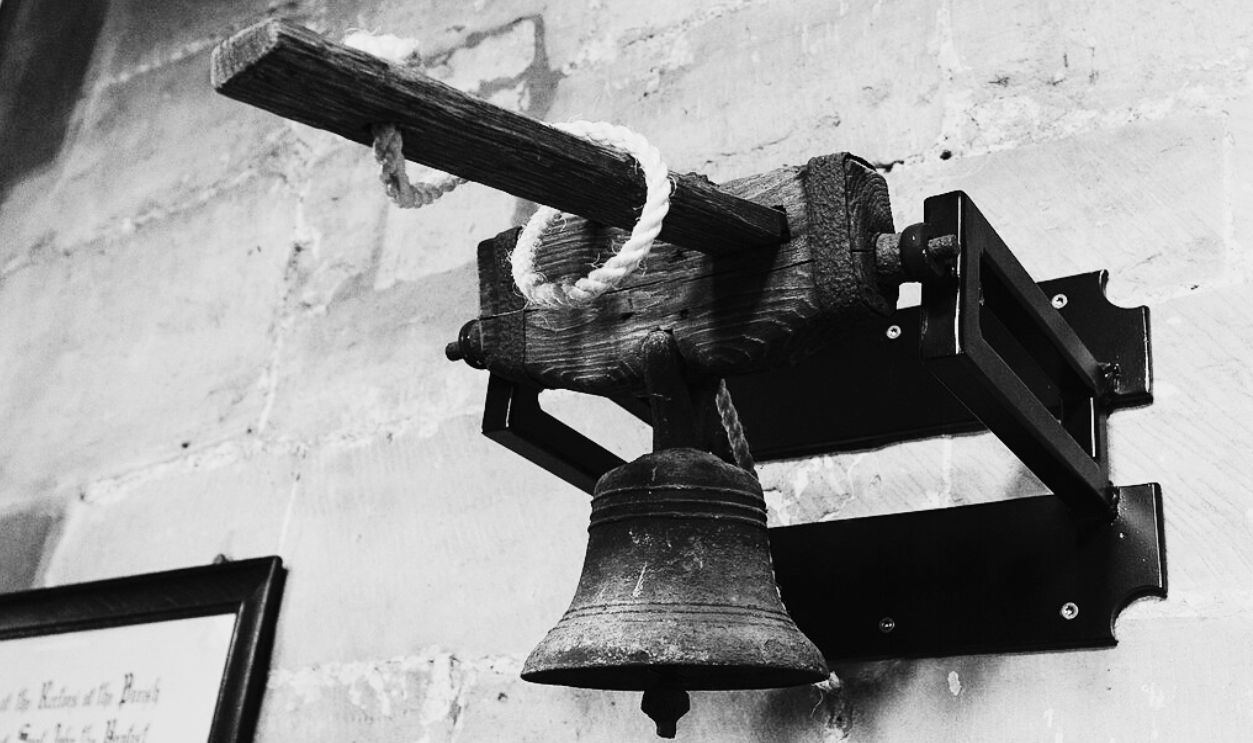 Michael Garlick, CC BY-SA 2.0, Wikimedia Commons
Michael Garlick, CC BY-SA 2.0, Wikimedia Commons
Flagellants Roamed Streets To Atone With Whips
During crises like the Black Death, bands of roving flagellants marched through towns to whip themselves to atone for humanity's sins. They believed their suffering could stop divine punishment. These public rituals attracted large audiences but often alarmed church officials.
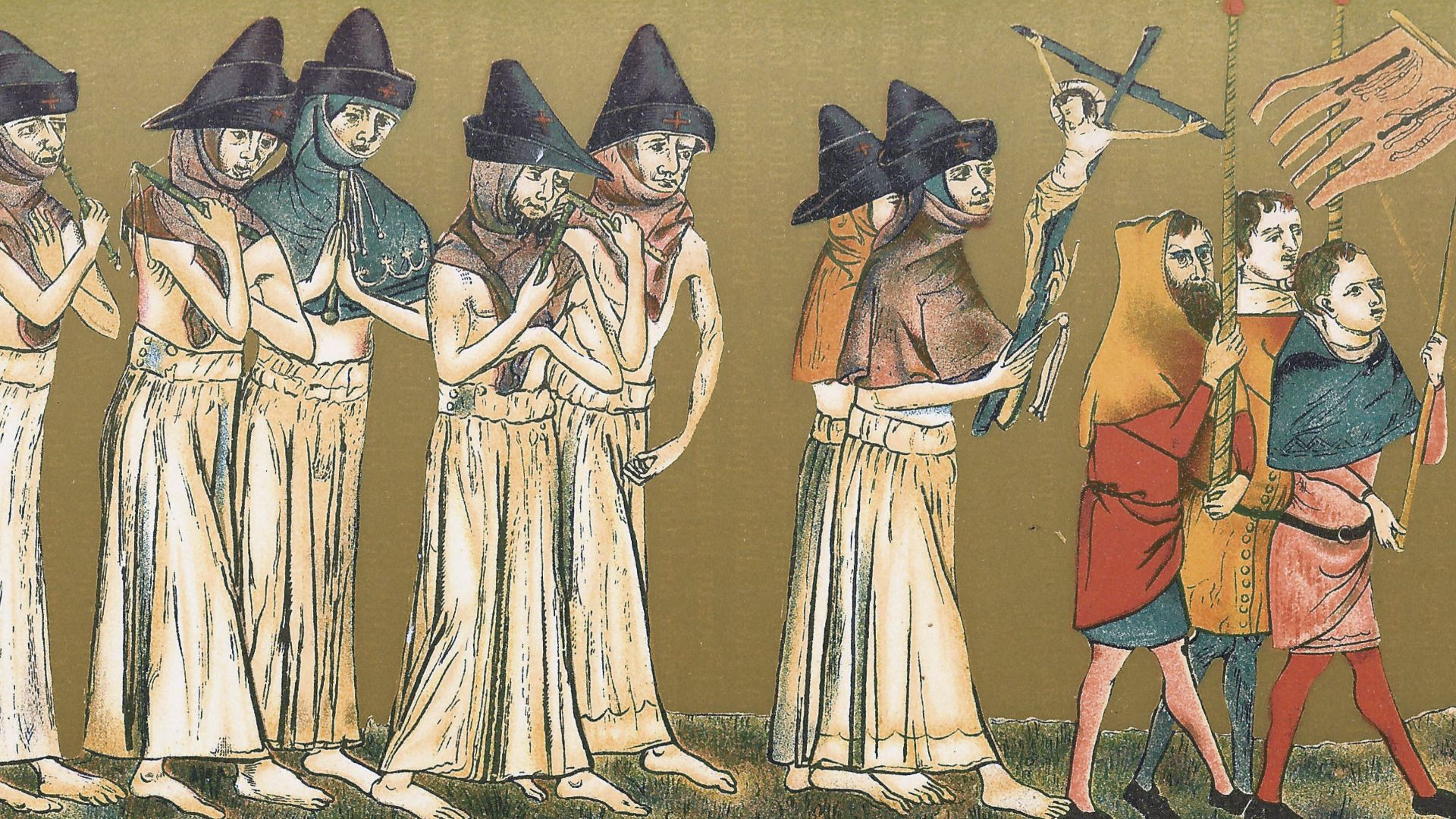 Pierart dou Tielt (fl. 1340-1360), Wikimedia Commons
Pierart dou Tielt (fl. 1340-1360), Wikimedia Commons
Cats Were Killed For Being "Agents Of The Devil"
Black cats, in particular, were linked to witchcraft and Satan. They were hunted or thrown from towers. Pope Gregory IX's 1233 decree named “Vox in Rama” may have fueled this fear. Ironically, fewer cats led to more rats, which amplified the spread of plague across Europe.
 DrL, CC BY-SA 2.5, Wikimedia Commons
DrL, CC BY-SA 2.5, Wikimedia Commons
Rainbows Were Seen As Divine Warnings
Rather than marvels of light, rainbows were interpreted as heavenly signs. Chronicles mention them before disasters or upheavals. Some believed they symbolized God's displeasure or promises of coming judgment. They were studied religiously and linked to scriptural prophecy.
Animal Trials Were Held In Church Courts
Animals ranging from pigs to insects were tried in ecclesiastical courts for crimes such as theft or murder. Some were hanged or exiled, and legal records detailed judges and verdicts. These proceedings reflected the belief that morality applied to all beings created by God.
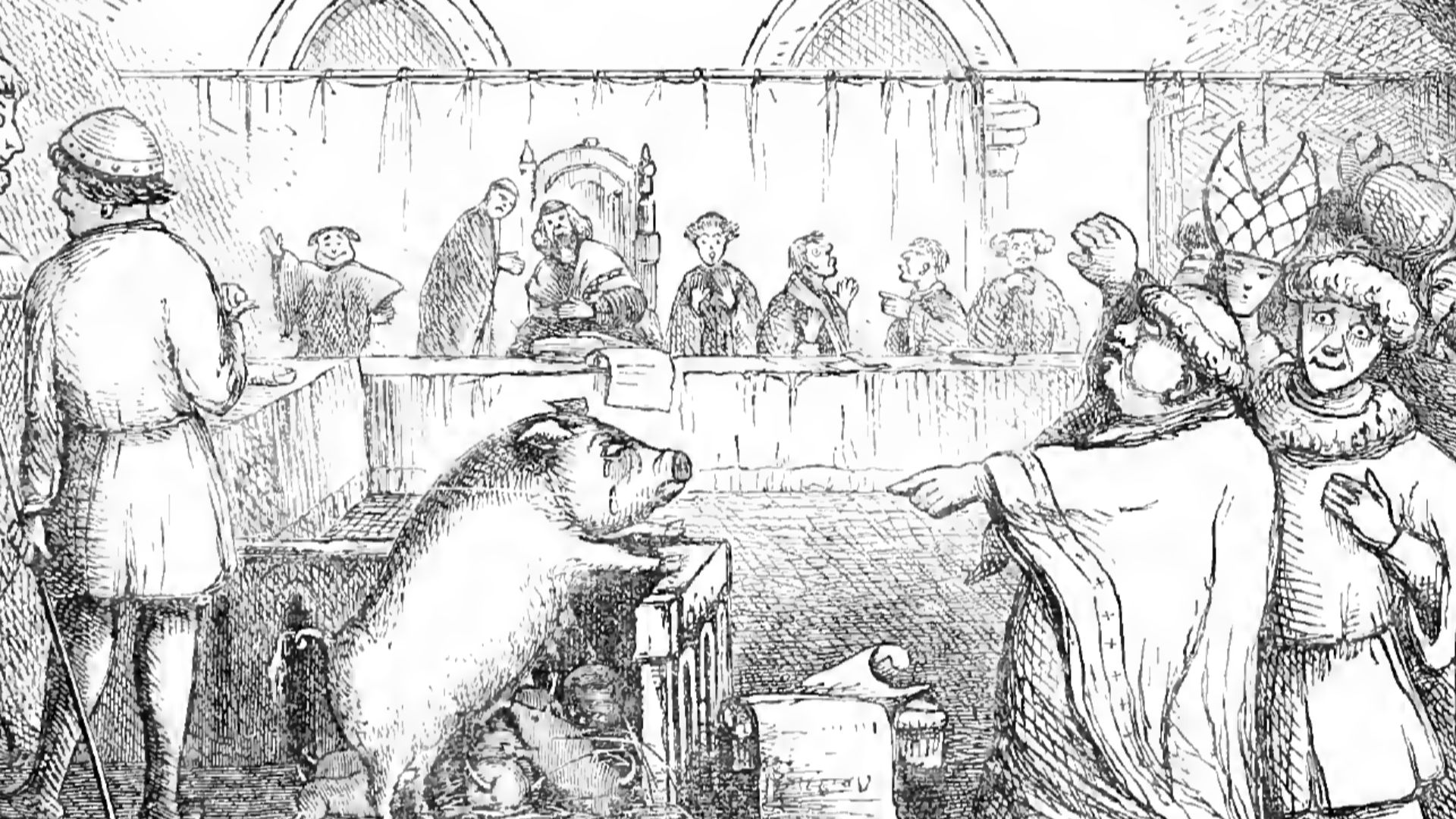 Unknown authorUnknown author, Wikimedia Commons
Unknown authorUnknown author, Wikimedia Commons
Dancing Plagues Spread Through Religious Fervor
In the 14th and 16th centuries, dozens of people danced uncontrollably in city streets, some until they collapsed or died. Known as dancing plagues, these episodes were often blamed on divine punishment or spiritual possession. Clergy sometimes led prayers and processions to stop the outbreaks.
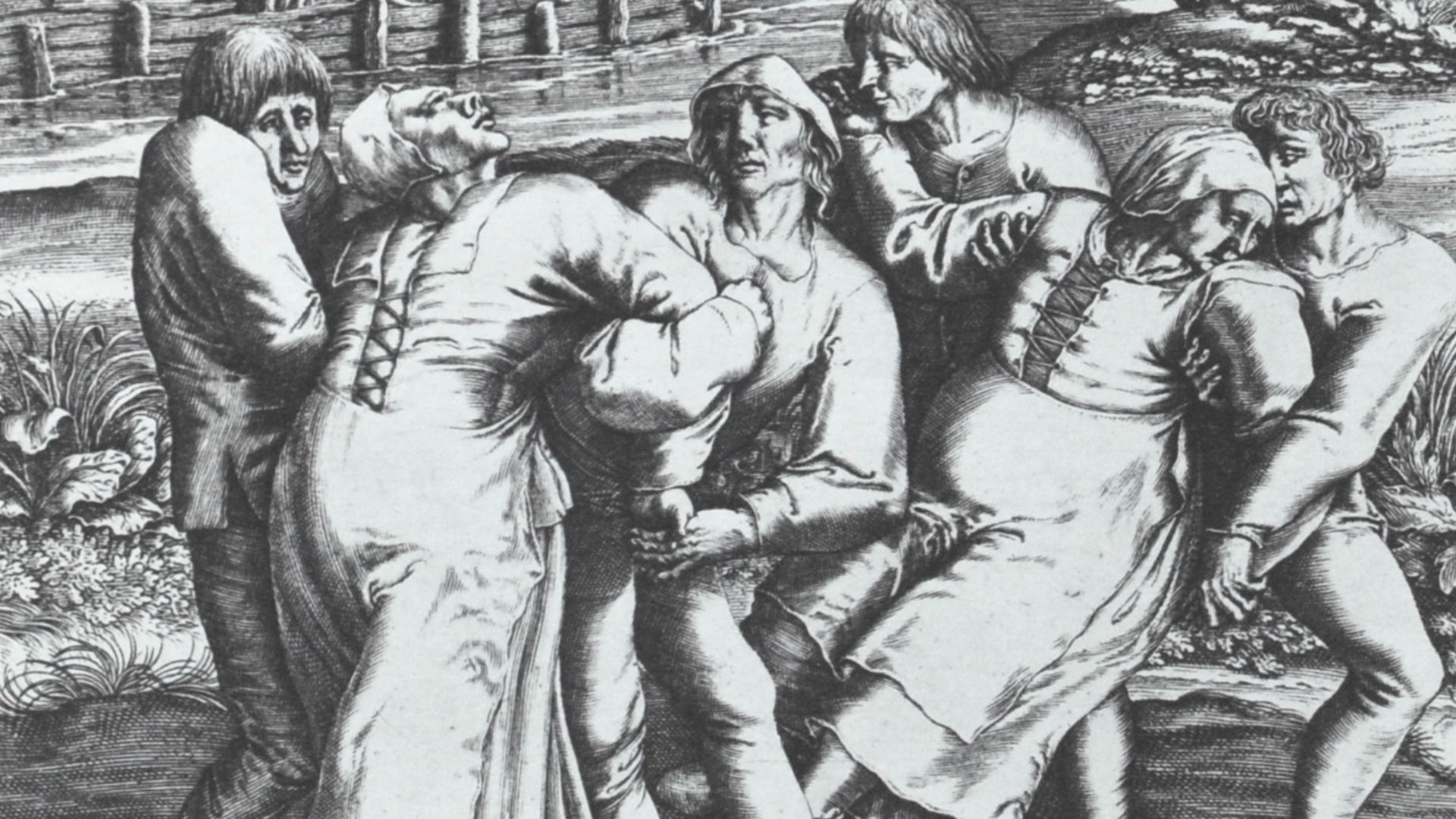 Pieter Brueghel the Elder, Wikimedia Commons
Pieter Brueghel the Elder, Wikimedia Commons
You Could Be Tried By Holding A Hot Iron
Trial by ordeal tested innocence through pain. In one method, the accused carried a red-hot iron across several paces. If their wound healed cleanly after three days, they were deemed innocent. The Church oversaw these trials and believed divine judgment would reveal the truth.
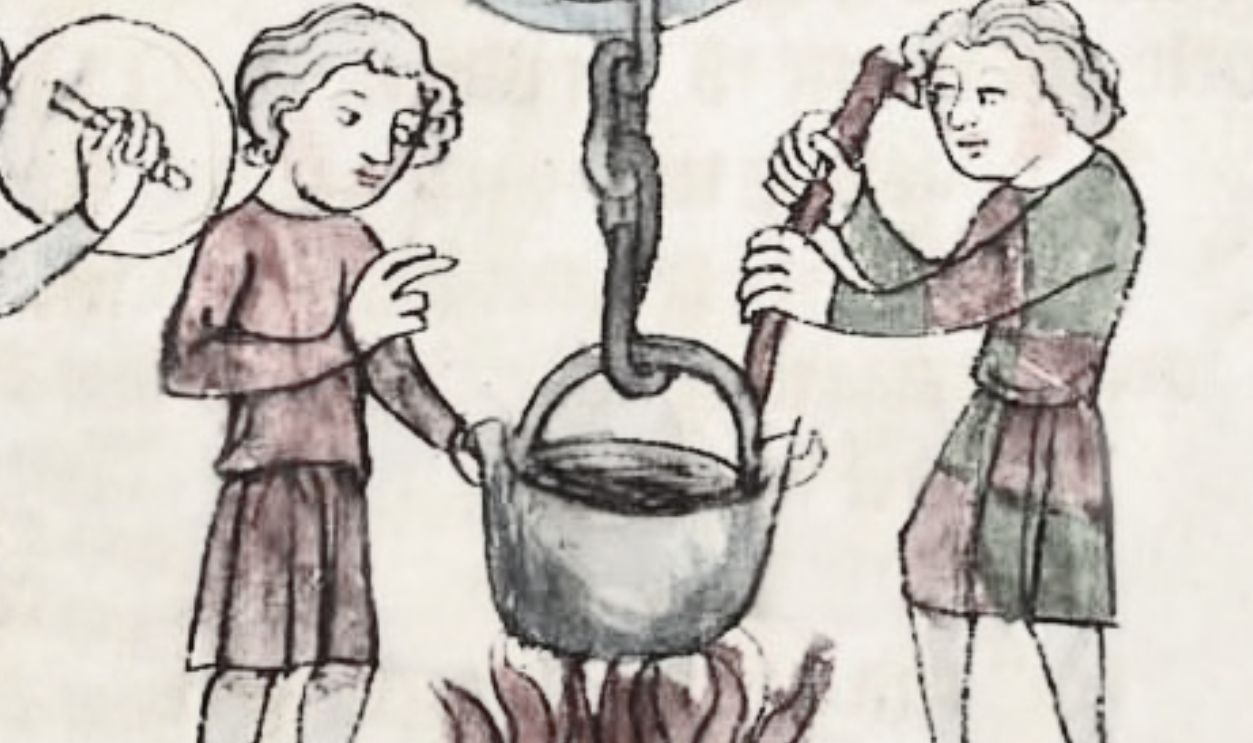 Unknown author, Wikimedia Commons
Unknown author, Wikimedia Commons
Guilt Could Be Decided By Dueling It Out
Similarly, trial by combat allowed disputing parties to fight to determine justice. Nobles used swords, while commoners sometimes fought with clubs or fists. Victory signified righteousness. Although brutal, it was legally recognized, and in some regions, women could appoint a champion to fight for them.
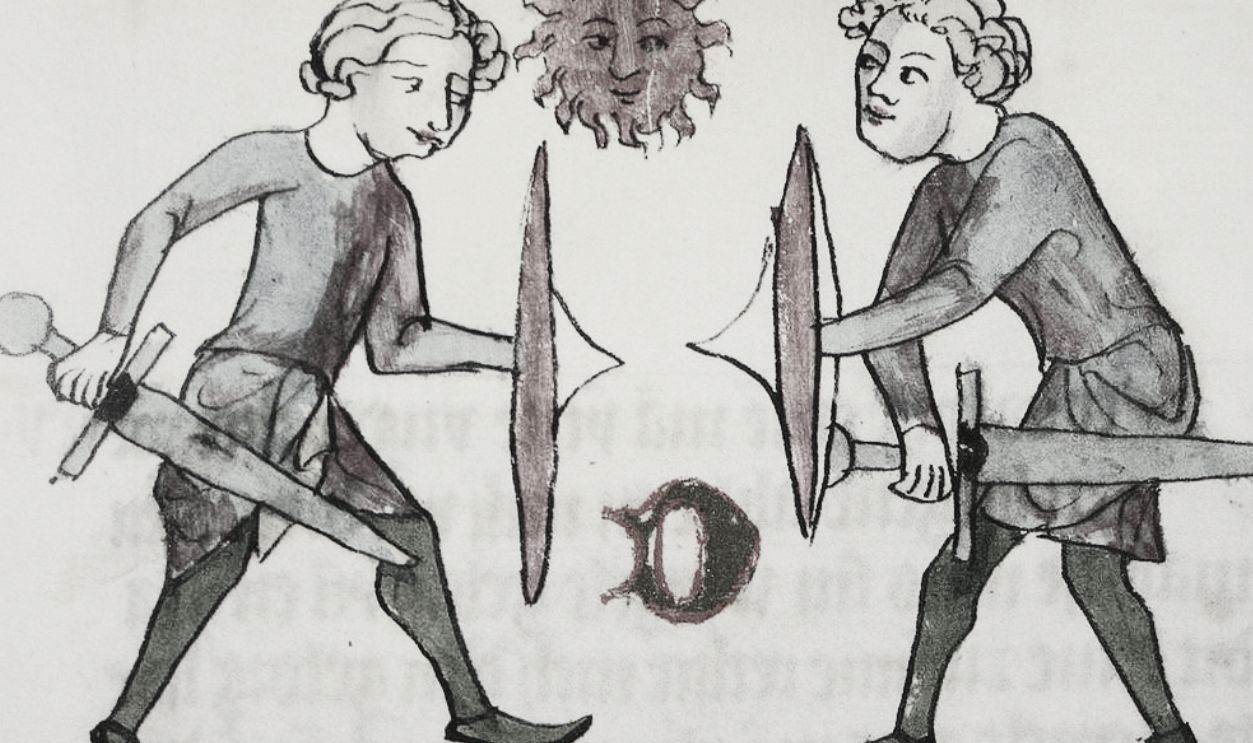 unknown medieval artist, Wikimedia Commons
unknown medieval artist, Wikimedia Commons
Punishments Varied Greatly Based On Social Class
A noble might pay a fine for the same crime, while a peasant was whipped or executed. Justice favored the wealthy. High-born offenders had legal representation and influence. Lower classes faced harsher penalties with little recourse. Law enforcement reflected rigid feudal hierarchies.
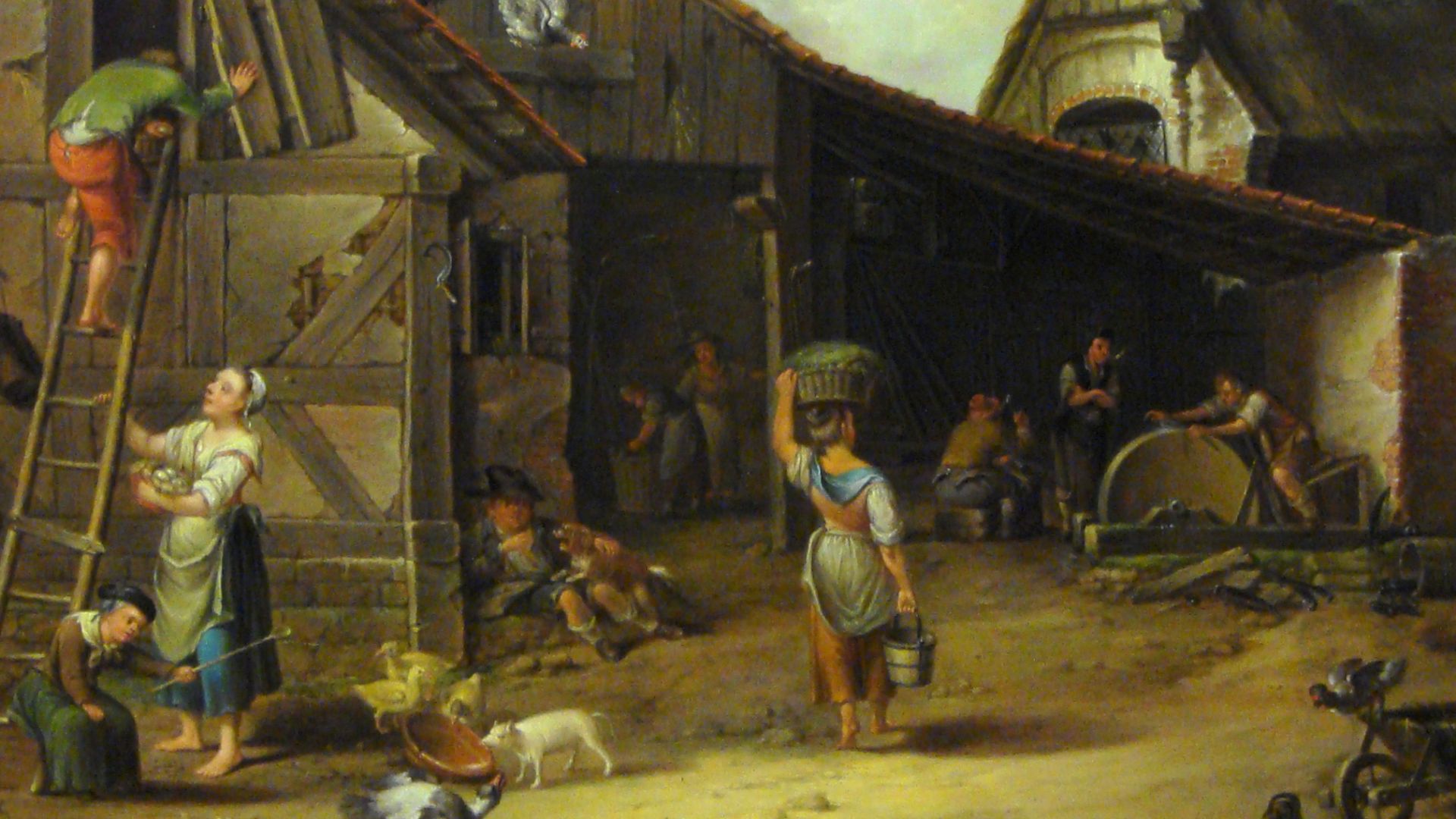 Johann Ludwig Ernst Morgenstern, Wikimedia Commons
Johann Ludwig Ernst Morgenstern, Wikimedia Commons
Public Humiliation Was A Common Penalty
Many offenders faced humiliation instead of prison. Stocks and shaming parades made examples of wrongdoers. Offenders were immobilized in wooden frames while townspeople jeered or pelted them with waste. These punishments were meant to restore order by publicly reinforcing social norms and expectations.
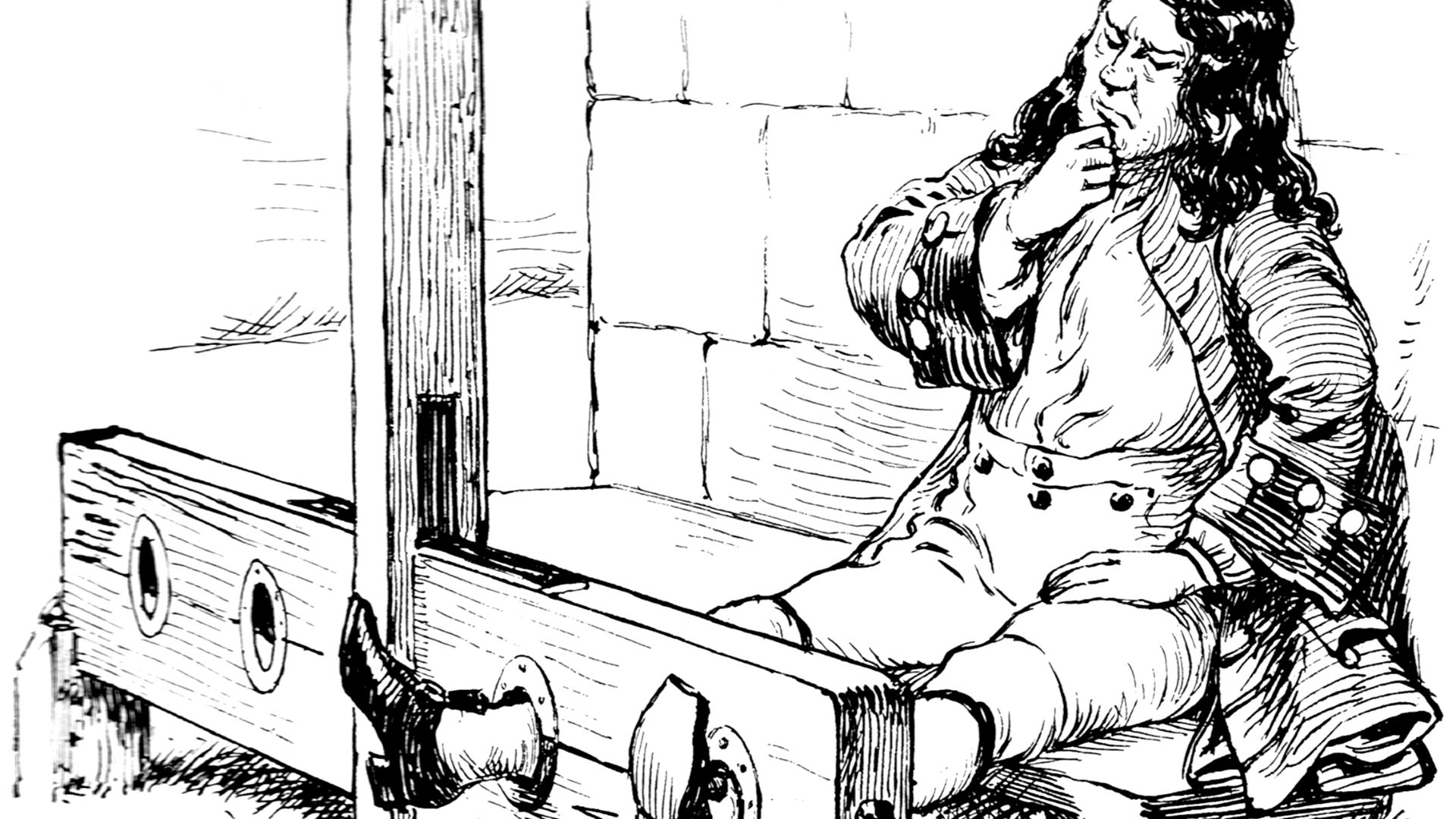 Pearson Scott Foresman, Wikimedia Commons
Pearson Scott Foresman, Wikimedia Commons
Gossip Alone Could Land You In Prison
In tight-knit communities, rumors often traveled quickly and reached the ears of authorities. Even whispered accusations of heresy or treason could result in arrest. Because formal evidence was rarely required, hearsay alone could lead to sentencing, particularly when it aligned with local fears or politics.
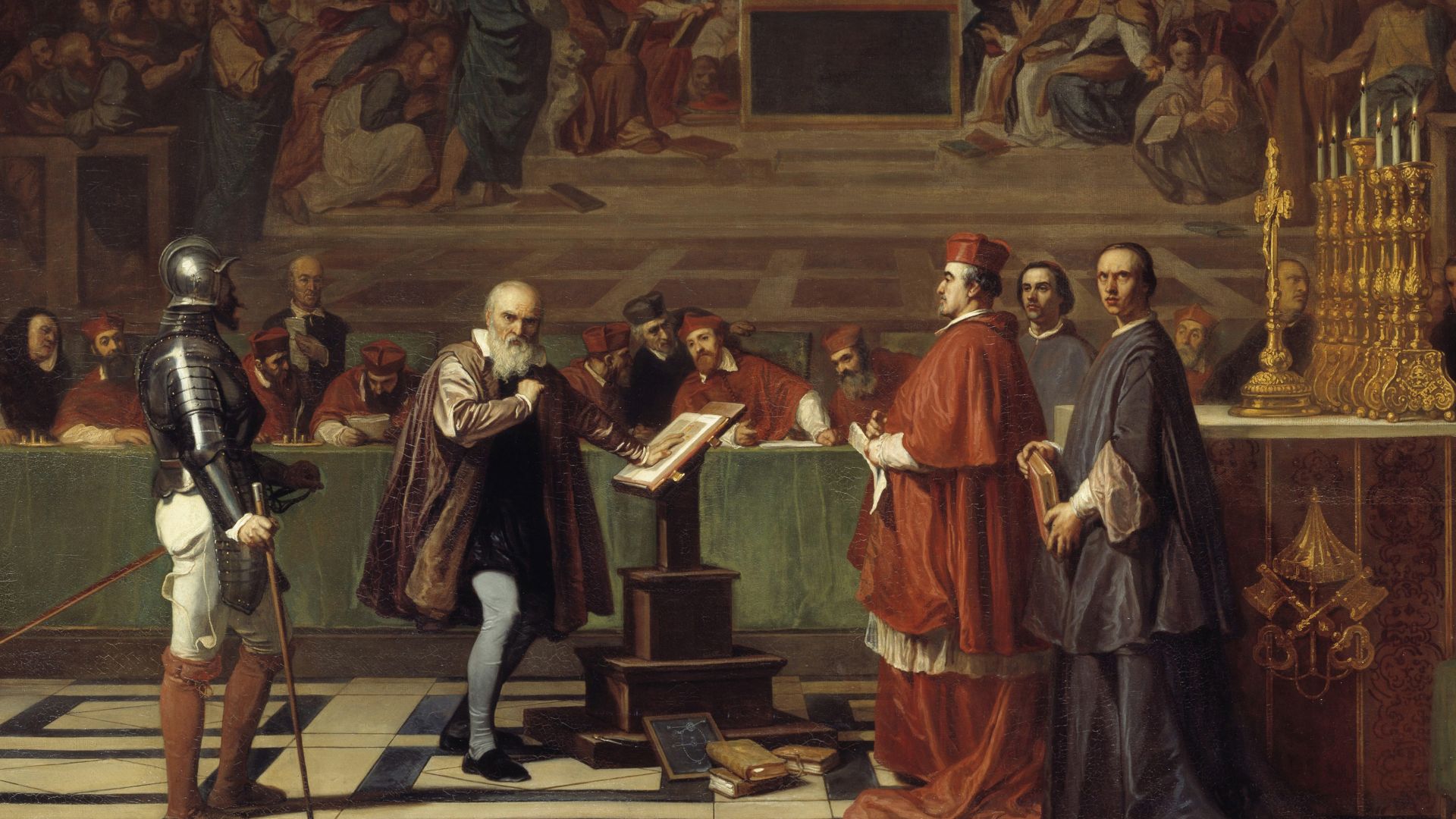 Joseph-Nicolas Robert-Fleury, Wikimedia Commons
Joseph-Nicolas Robert-Fleury, Wikimedia Commons
Some Criminals Were Declared "Wolves Of Society"
Habitual offenders or those who fled justice were declared outlaws or "Wolves of Society". This meant they lost all legal protections. Anyone could harm or kill them without punishment. These declarations effectively erased someone from civic life by casting them as enemies of order.
Sleep Happened In Two Distinct Shifts
People didn't sleep in one long stretch. Instead, they often went to bed shortly after nightfall, woke around midnight for a few hours, then returned to sleep. This "first" and "second" sleep was used for prayer or quiet tasks. This biphasic sleep was common before the Industrial Revolution.
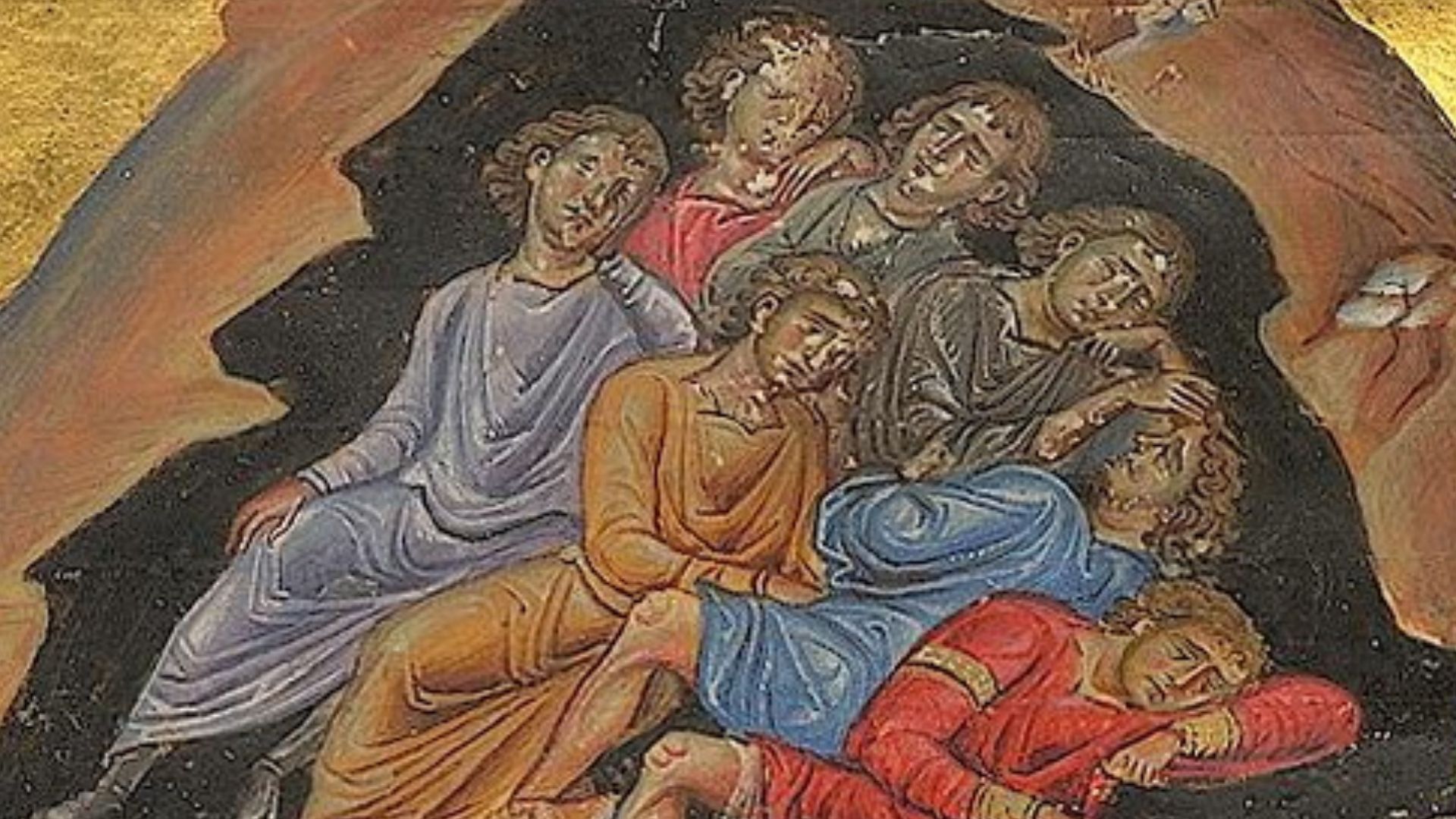 AnonymousUnknown author, Wikimedia Commons
AnonymousUnknown author, Wikimedia Commons
Entire Families Slept In One Bed
Privacy was rare. Families, including children and sometimes guests, often shared a large bed for warmth and space-saving. Servants might sleep on the floor nearby. Sleeping arrangements reflected necessity more than comfort, with blankets made of wool and straw mattresses stuffed with chaff or feathers.
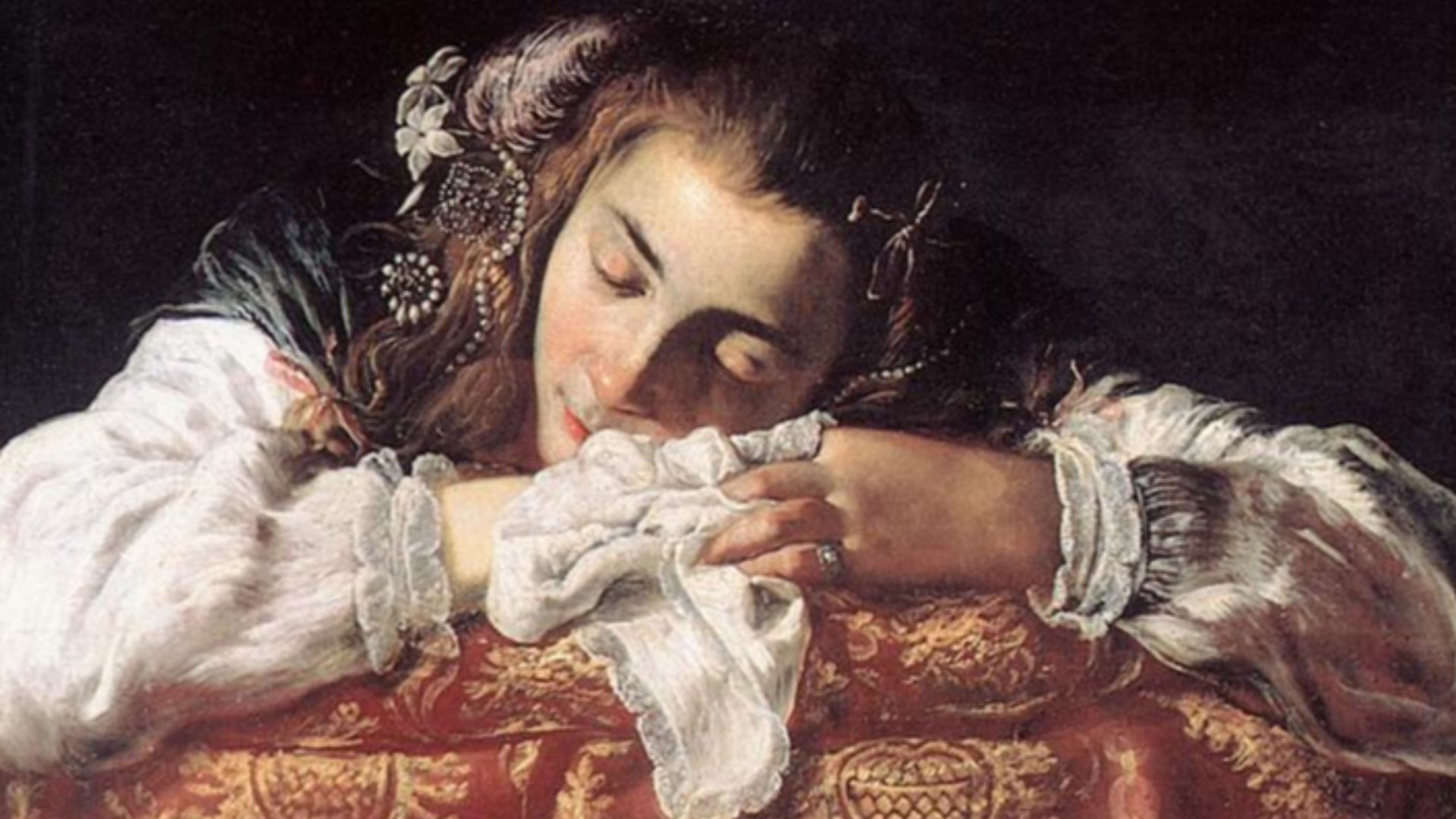 Domenico Fetti, Wikimedia Commons
Domenico Fetti, Wikimedia Commons
Beer Was Safer To Drink Than Water
Since water sources were often contaminated, people considered beer a safer choice. Even weak beer was boiled during brewing, which helped kill harmful microbes. Children and adults drank "small beer" daily by depending on it as a nutritious and reliable alternative to untreated water.
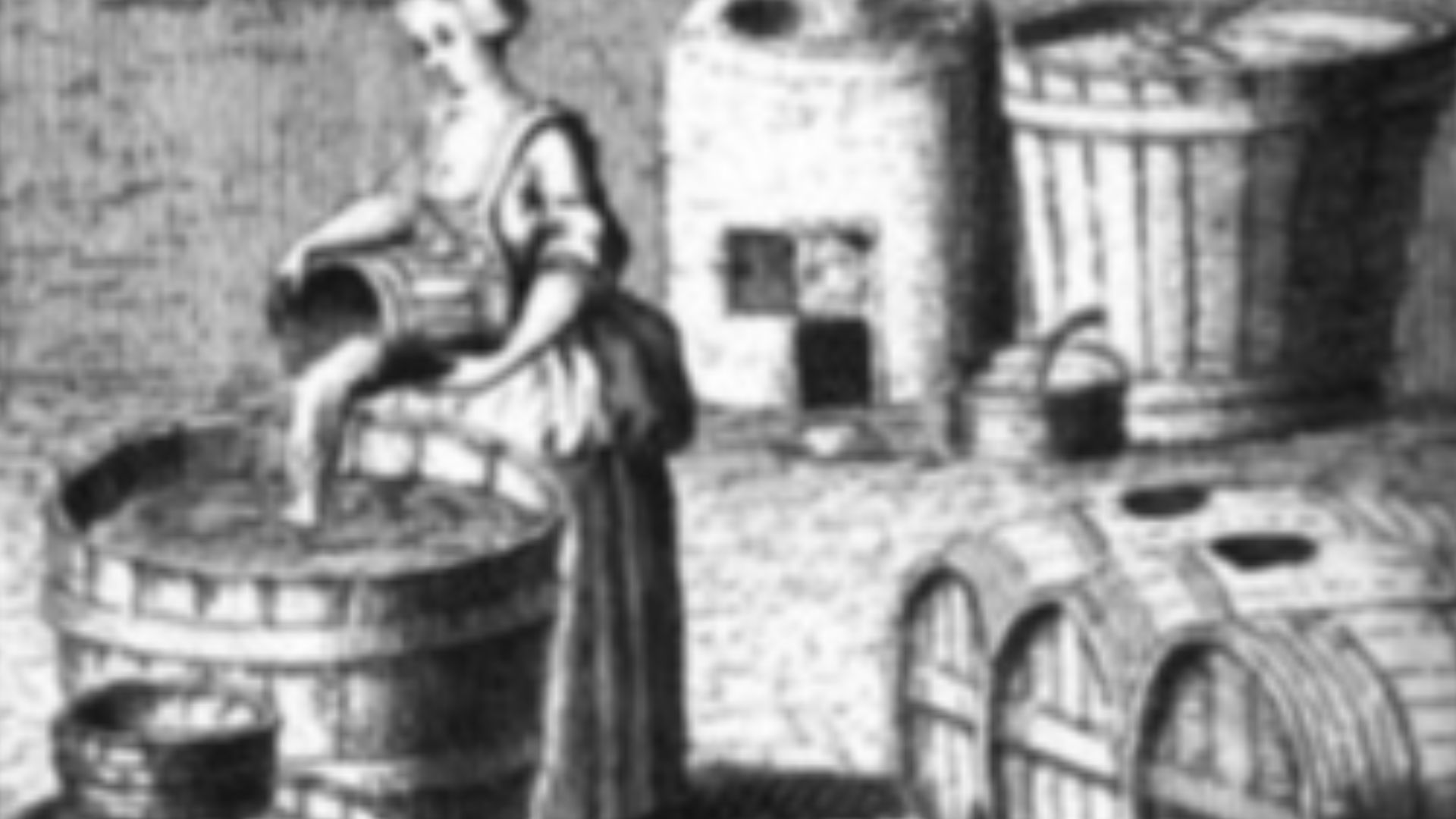 Unknown authorUnknown author, Wikimedia Commons
Unknown authorUnknown author, Wikimedia Commons
People Used Leaves, Moss, Or Shells As Toilet Paper
Toilet paper didn't exist. Instead, people cleaned themselves with natural materials like moss or corn cobs. In wealthier homes, wool or rags might have been used. Public latrines were often built over rivers or cesspits, though many simply relieved themselves in fields or alleyways.
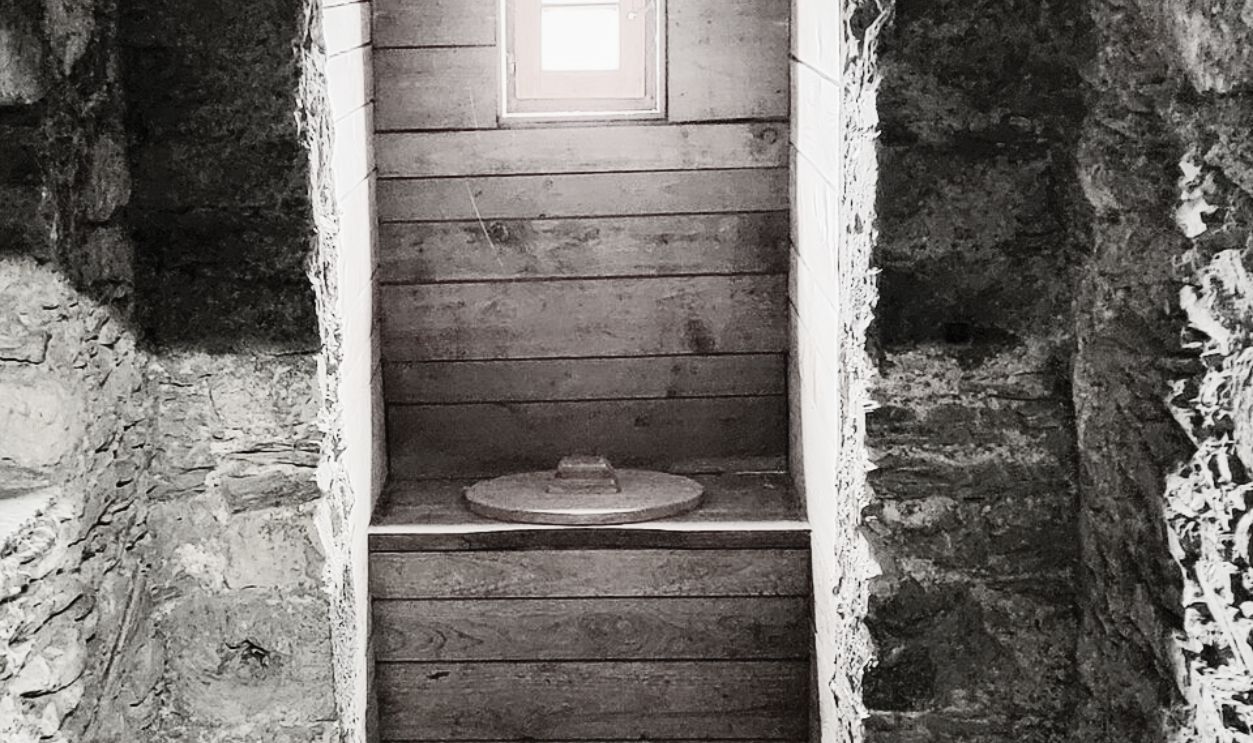 Throw it away, CC BY-SA 4.0, Wikimedia Commons
Throw it away, CC BY-SA 4.0, Wikimedia Commons
Town Criers Were The Original Breaking News
Most people couldn't read, so the news spread aloud. Town criers walked through streets announcing royal edicts or important events. Bells or drums drew attention. Their messages shaped public understanding, and in many places, interfering with a crier was punishable by law.
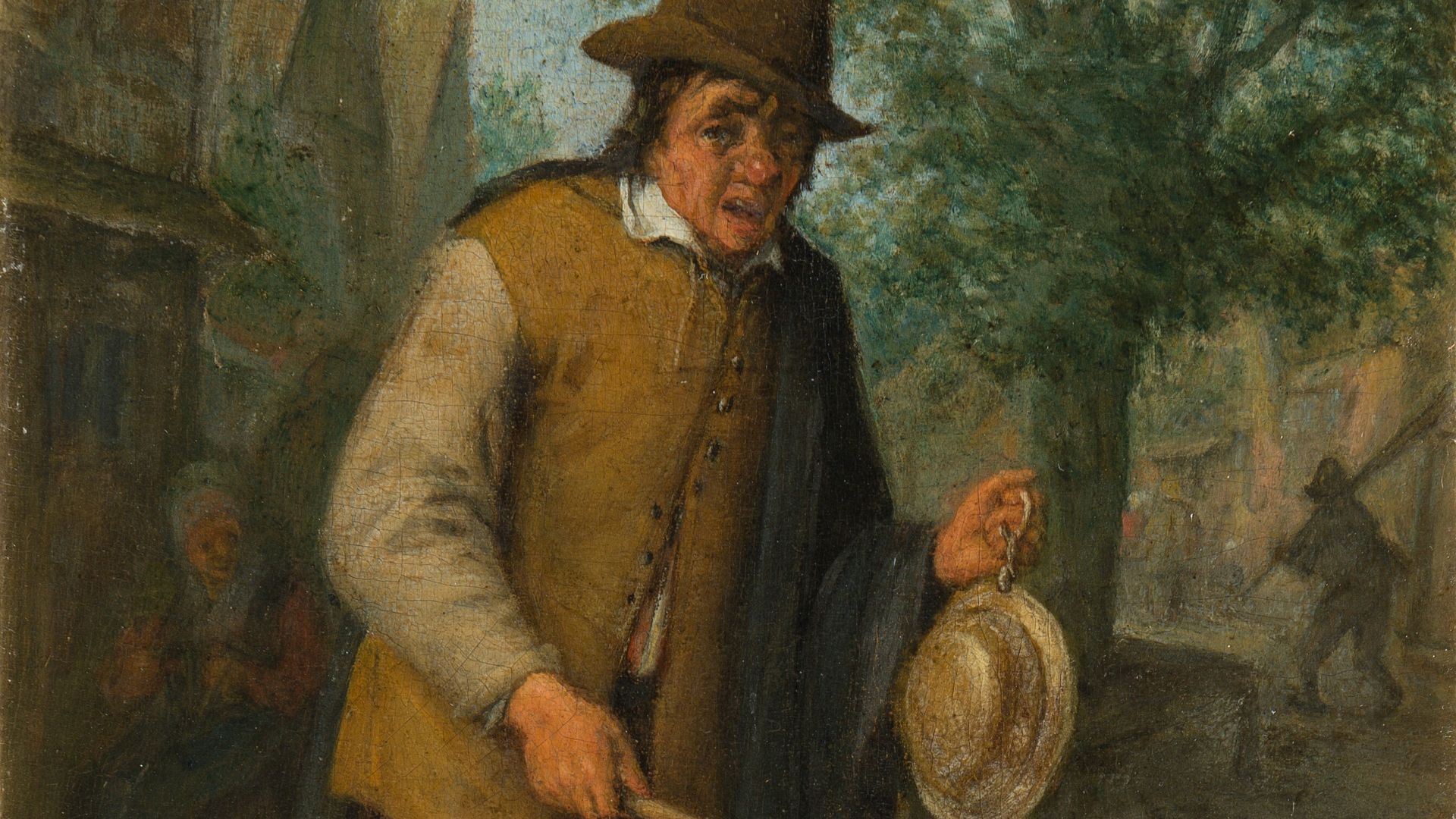 Adriaen van Ostade, Wikimedia Commons
Adriaen van Ostade, Wikimedia Commons
Most Clothes Were Never Truly Washed
Washing clothes was labor-intensive and rare. People spot-cleaned stains or aired garments out. Linen underclothes were changed more often by absorbing sweat and dirt from wool outer garments. Complete washing involved soaking in lye and beating garments—too harsh for frequent use.
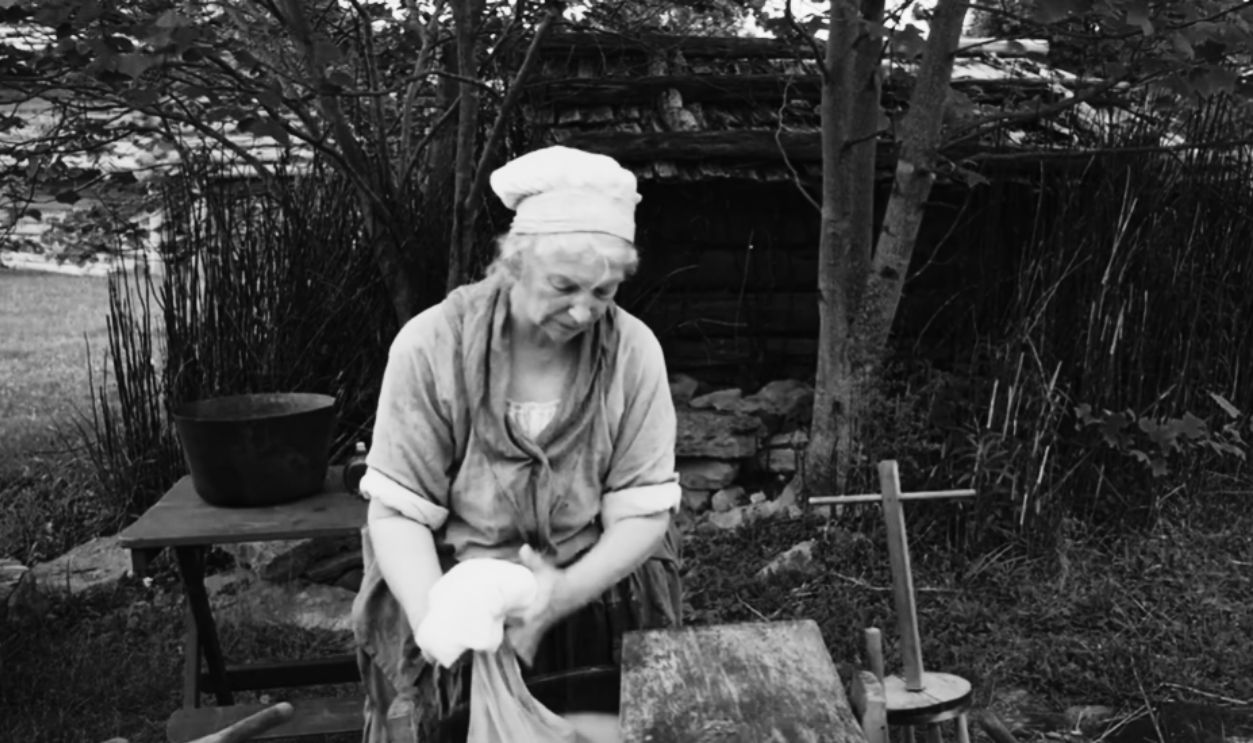 Historical Laundry Part 2: No Washing Machine, No Dryer, Hit It With A Stick? by Townsends
Historical Laundry Part 2: No Washing Machine, No Dryer, Hit It With A Stick? by Townsends
Meals Were Eaten From Shared Bowls, By Hand
Communal eating was every day. Families and guests ate from large shared bowls using their hands or simple knives. Spoons existed but were scarce. The bread was often served on a plate. Manners mattered, and reaching across the table or double-dipping could draw a sharp scolding.
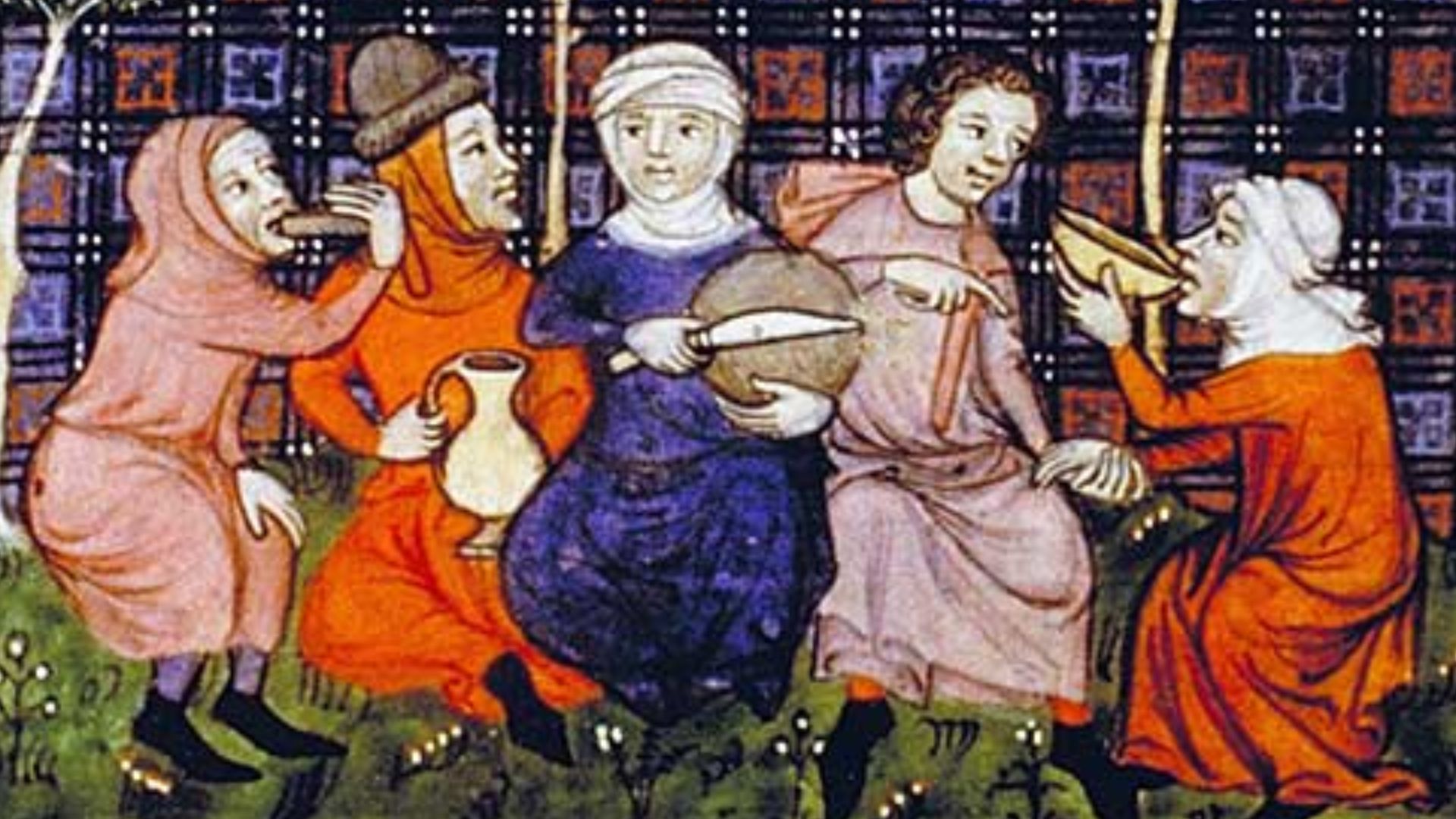 Peter Isotalo, Wikimedia Commons
Peter Isotalo, Wikimedia Commons
Candle Clocks Helped Track Time After Sundown
Without mechanical clocks, people used candles marked with hourly intervals. As the wax melted, it revealed how much time had passed. These "candle clocks" helped monks keep prayer schedules and allowed households to organize activities after sunset when daylight no longer guided routines.
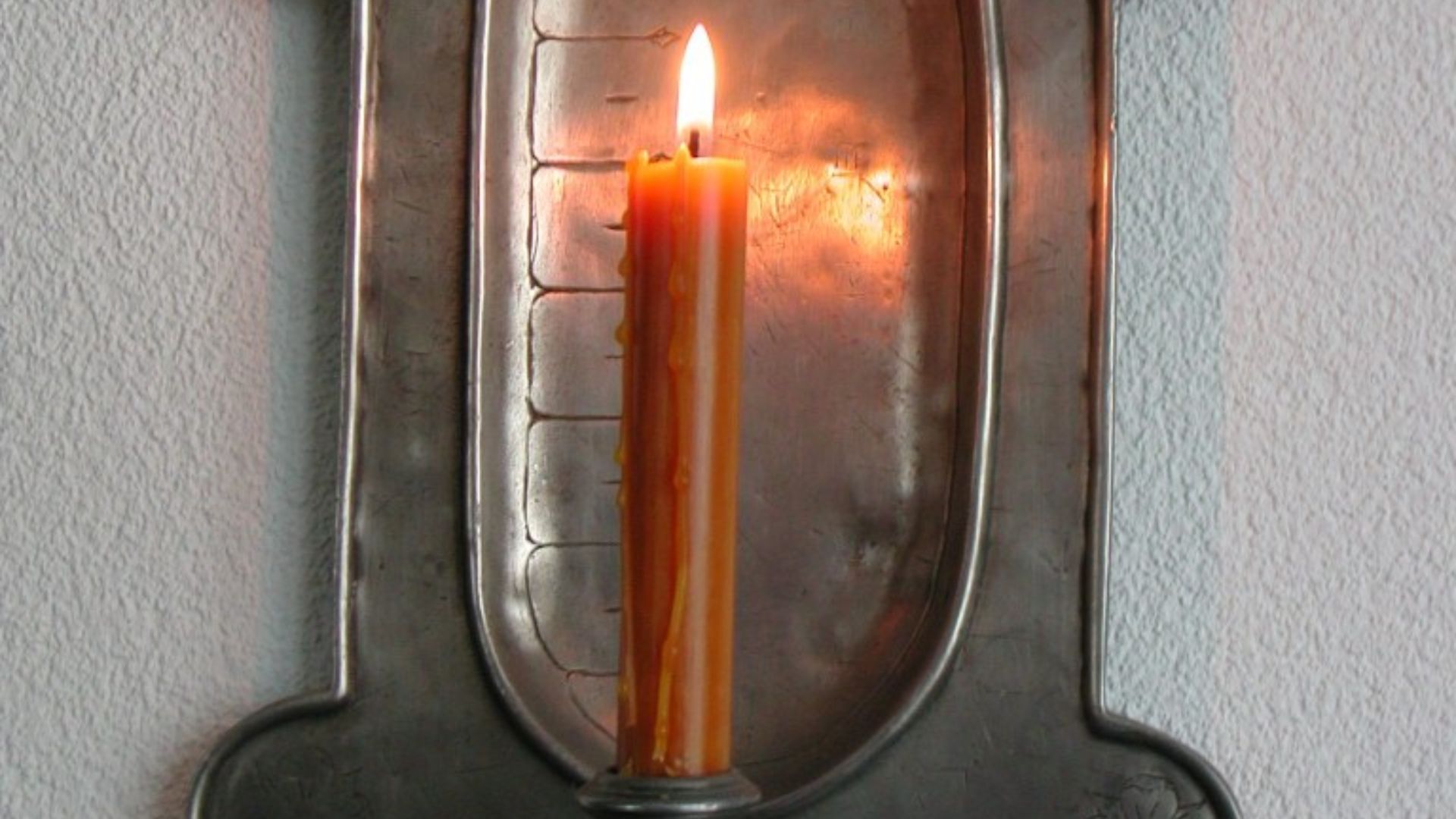 de:Benutzer:Flyout, Wikimedia Commons
de:Benutzer:Flyout, Wikimedia Commons
Knights Swore Chivalry, But Often Ignored It
Knights were expected to uphold courage and protect the weak. In practice, many used their status to exploit others. Chronicles describe knights raiding villages by demanding tribute or ignoring codes entirely when pursuing personal gain. The ideal of chivalry rarely matched reality.
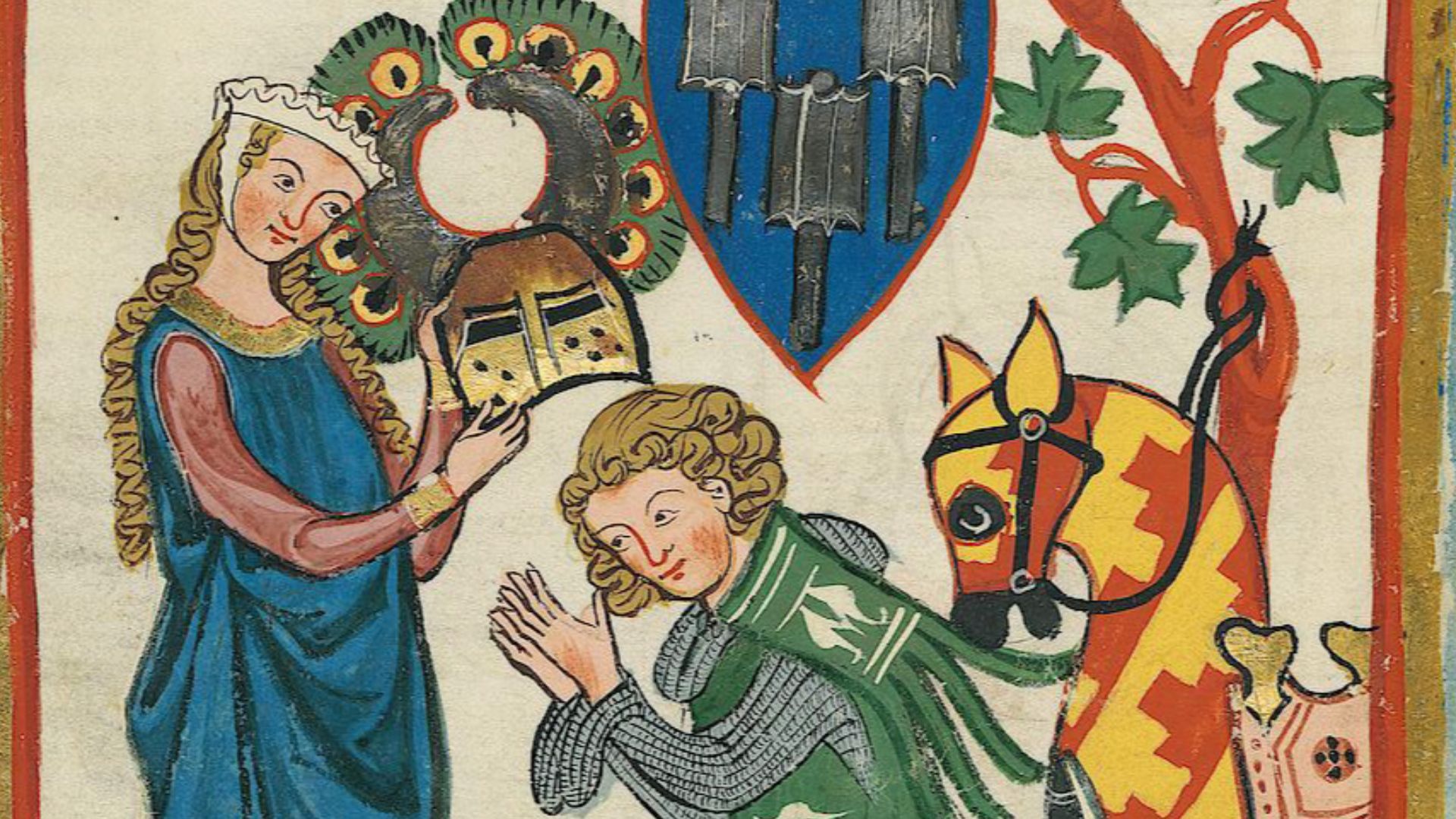 Master of the Codex Manesse, Wikimedia Commons
Master of the Codex Manesse, Wikimedia Commons
Courtly Love Involved Secret Codes And Rituals
Courtly love glorified noble romance under a veil of strict conventions, which meant lovers communicated through coded messages and symbolic tokens. While adultery was often suggested, it rarely crossed into reality. And troubadours romanticized these unattainable passions while upholding social duty.
 Edmund Leighton, Wikimedia Commons
Edmund Leighton, Wikimedia Commons
Castles Were Cold, Damp, And Infested
Stone castles looked good but were uncomfortable. Rooms were drafty, and moisture soaked into the walls. Lice and rats were common. Even royalty endured the chill by relying on furs and rush-covered floors to insulate. A castle's power far outweighed its comfort.
Children Were Betrothed Before They Could Talk
Noble families arranged marriages early to secure alliances. Toddlers were promised to each other in formal agreements, with ceremonies and witnesses. These pacts prioritized lineage and politics over affection. Children had no say, and many met their future spouses directly as teens.
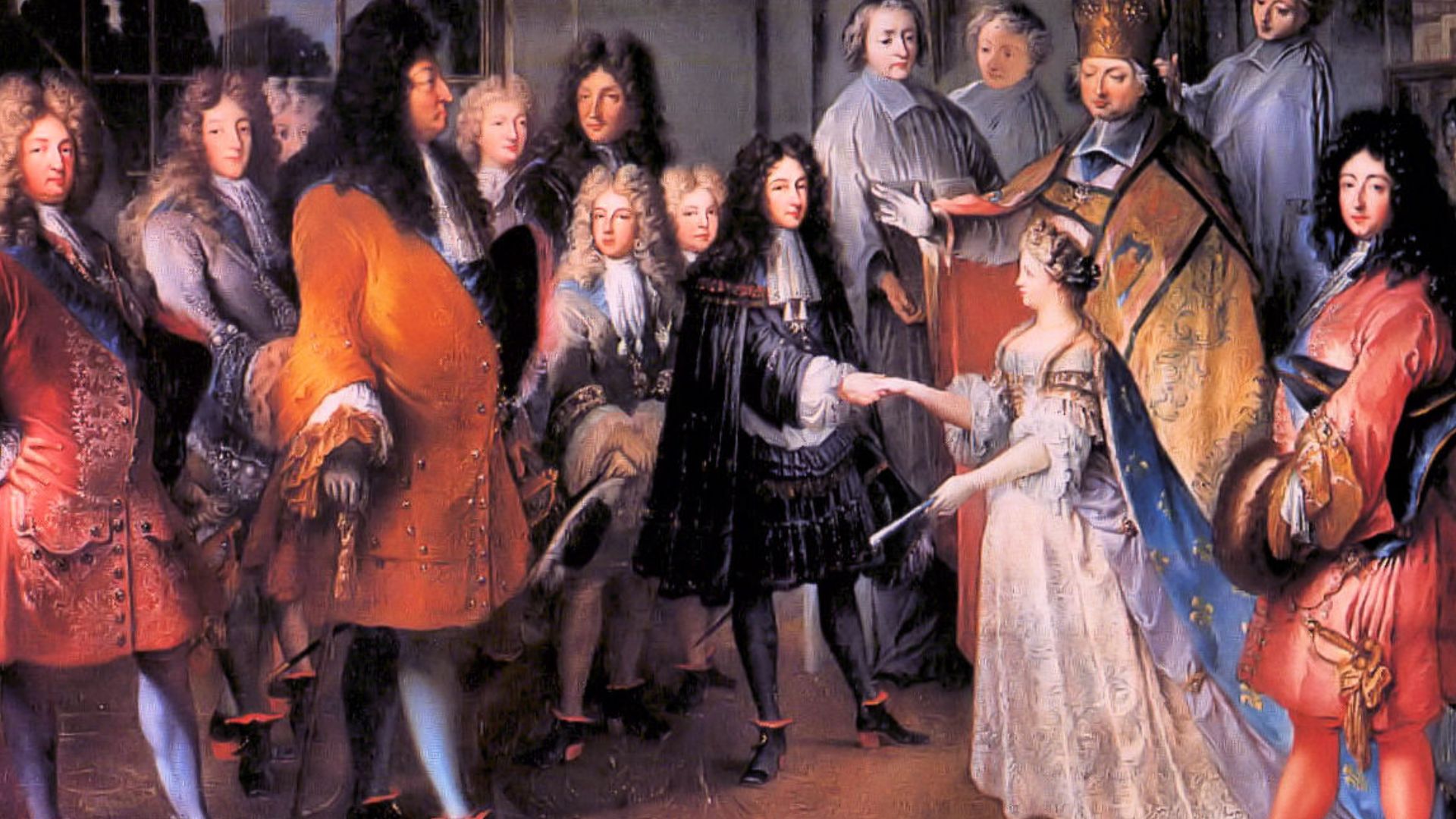 Antoine Dieu, Wikimedia Commons
Antoine Dieu, Wikimedia Commons
Jousting Was Not A Sport—It Was Survival
Early jousts were brutal trials of strength and precision long before they became romanticized spectacles.
Blunted weapons appeared later, but serious injuries still plagued contestants.
Knights could be unhorsed or even killed. Those who triumphed earned public acclaim and lasting reputations for martial skills.
" data-title="Early jousts were brutal trials of strength and precision long before they became romanticized spectacles. " class="fr-fic fr-dib" alt="Jousting ">Clinton & Charles Robertson from Del Rio, Texas & College Station, TX, USA, CC BY-SA 2.0, Wikimedia Commons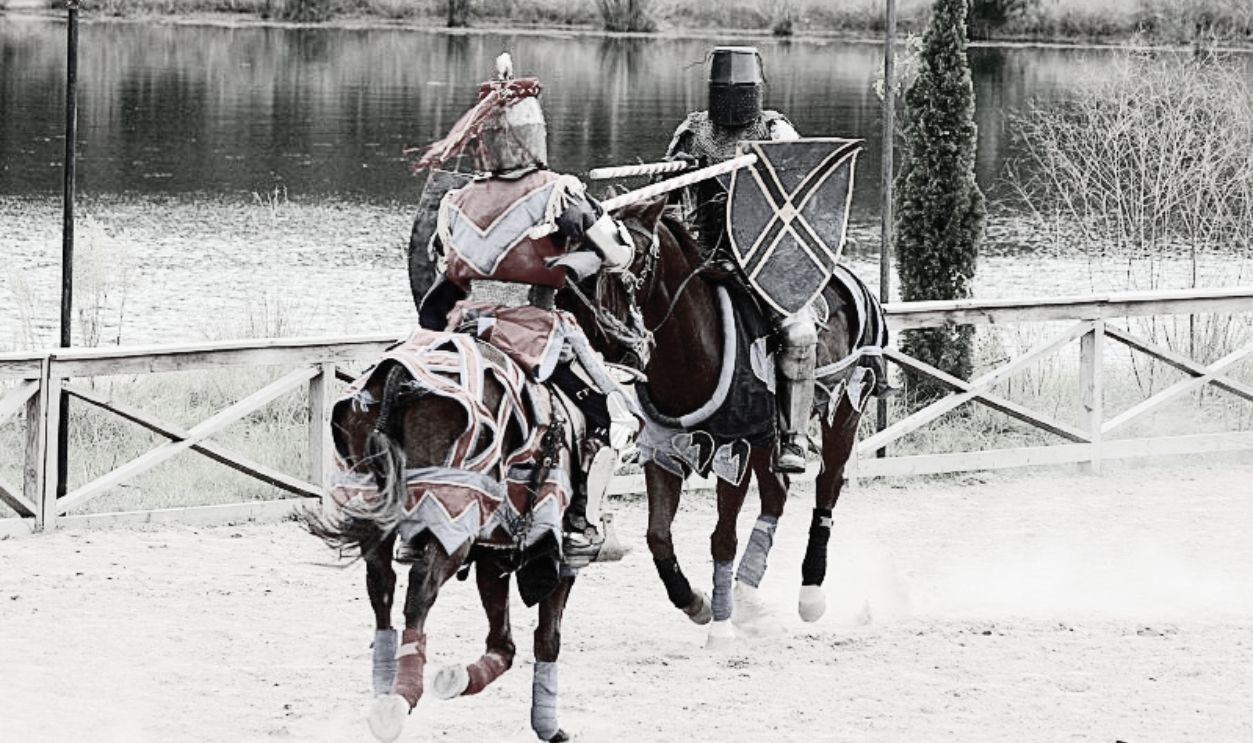 Advertisement
Advertisement
Feasts Included Peacock, Swan, And Jelly Towers
Medieval feasts were lavish performances of wealth where guests dined on roasted peacocks and swans with feathers reattached for display. Jelly towers and sugar sculptures also adorned tables. These events featured music and servers in costume, all designed to impress.
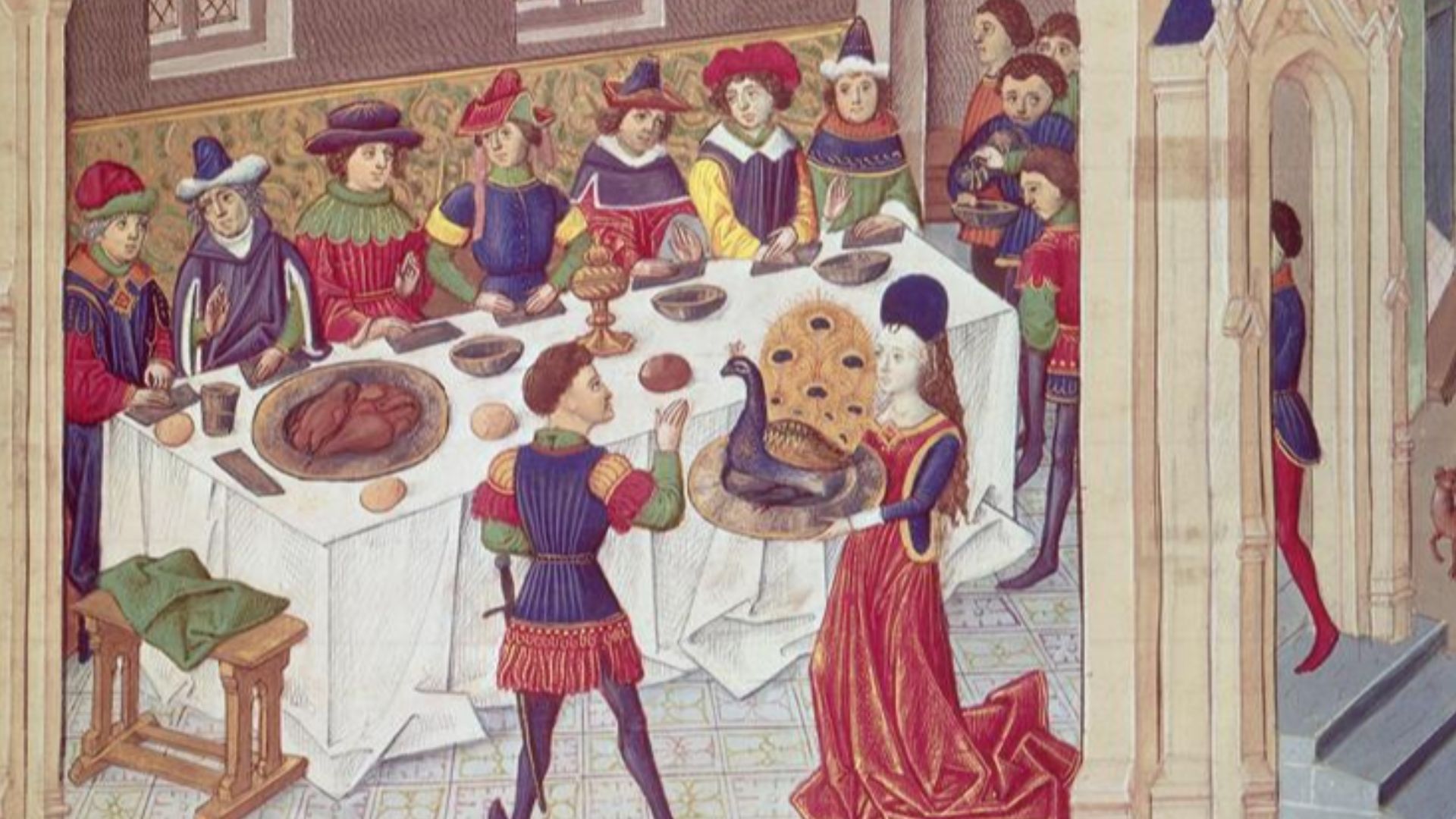 Anonymous 15th century painter, Wikimedia Commons
Anonymous 15th century painter, Wikimedia Commons
Books Were Chained To Desks In Libraries
Books were rare and expensive, copied by hand over months. To prevent theft, libraries chained them to desks. Visitors read in place by turning heavy pages with care. Even monasteries followed this practice and kept sacred texts secure while allowing scholarly access.
To prevent theft, libraries chained them to desks. " data-title="Books were rare and expensive, copied by hand over months. To prevent theft, libraries chained them to desks. " class="fr-fic fr-dib" alt="Books Were Chained">pellethepoet, Wikimedia Commons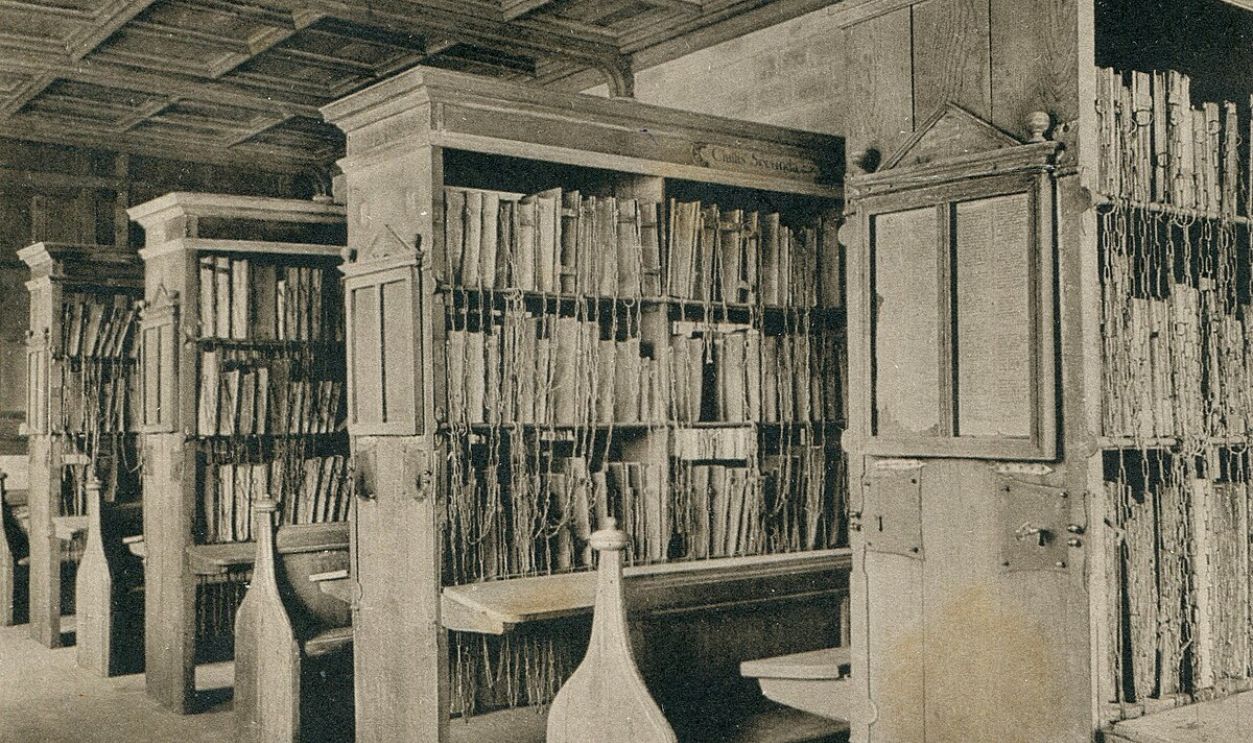 Advertisement
Advertisement
Only About 1% Of The Population Could Read
Literacy rates in late medieval Europe ranged from 5% to 10%, which depended on time and place. While clergy and nobility dominated literacy, some urban artisans and merchants could read. Most relied on oral tradition, as church-run schools were mainly for the elites.
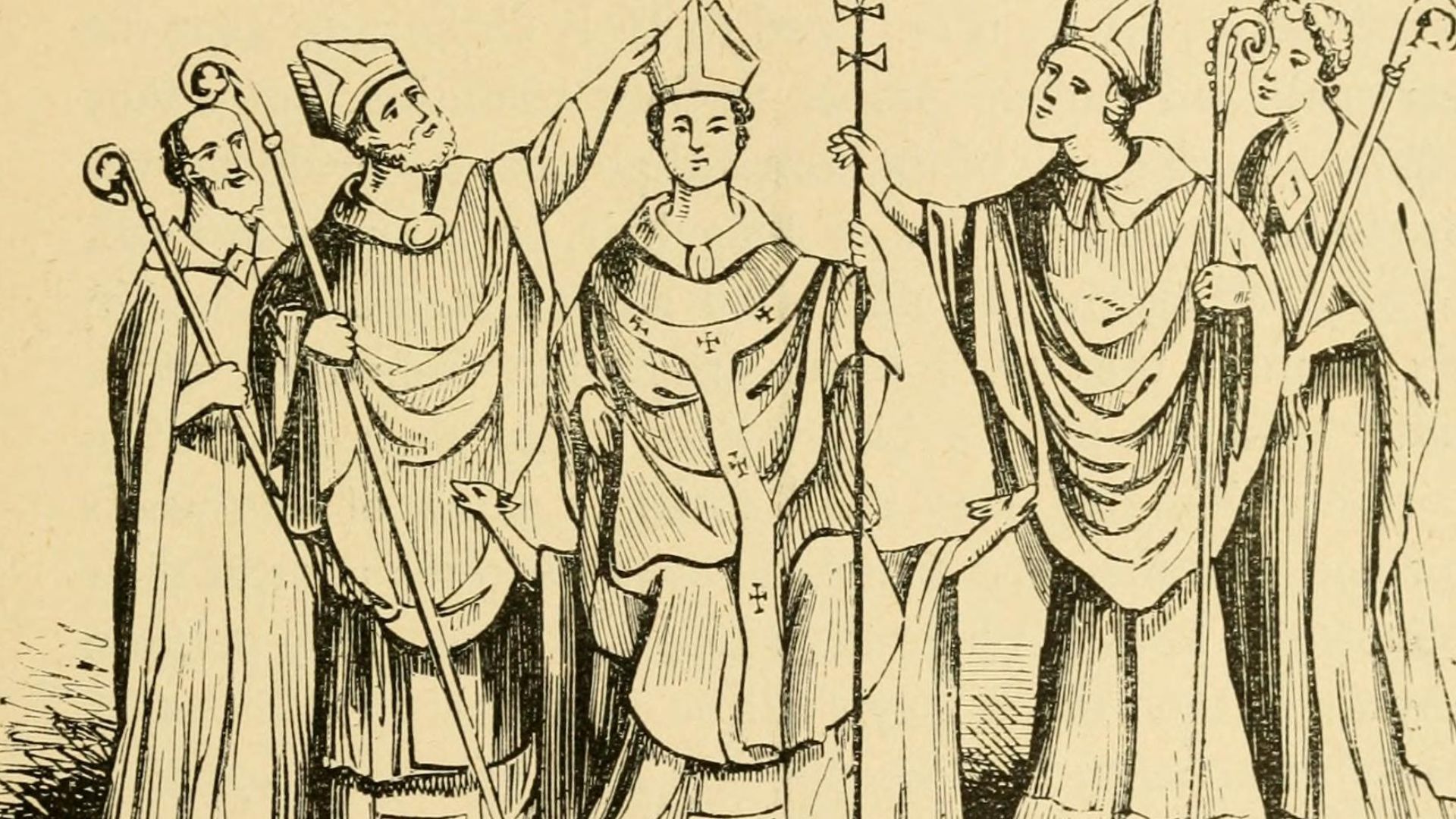 Internet Archive Book Images, Wikimedia Commons
Internet Archive Book Images, Wikimedia Commons
Latin Was Used For Everything Official—Even Marriage Records
Latin served as the universal language of law and scholarship. Marriage contracts and legal disputes were recorded in Latin. While locals spoke vernacular dialects, official scribes used Latin to preserve uniformity across kingdoms and church institutions.
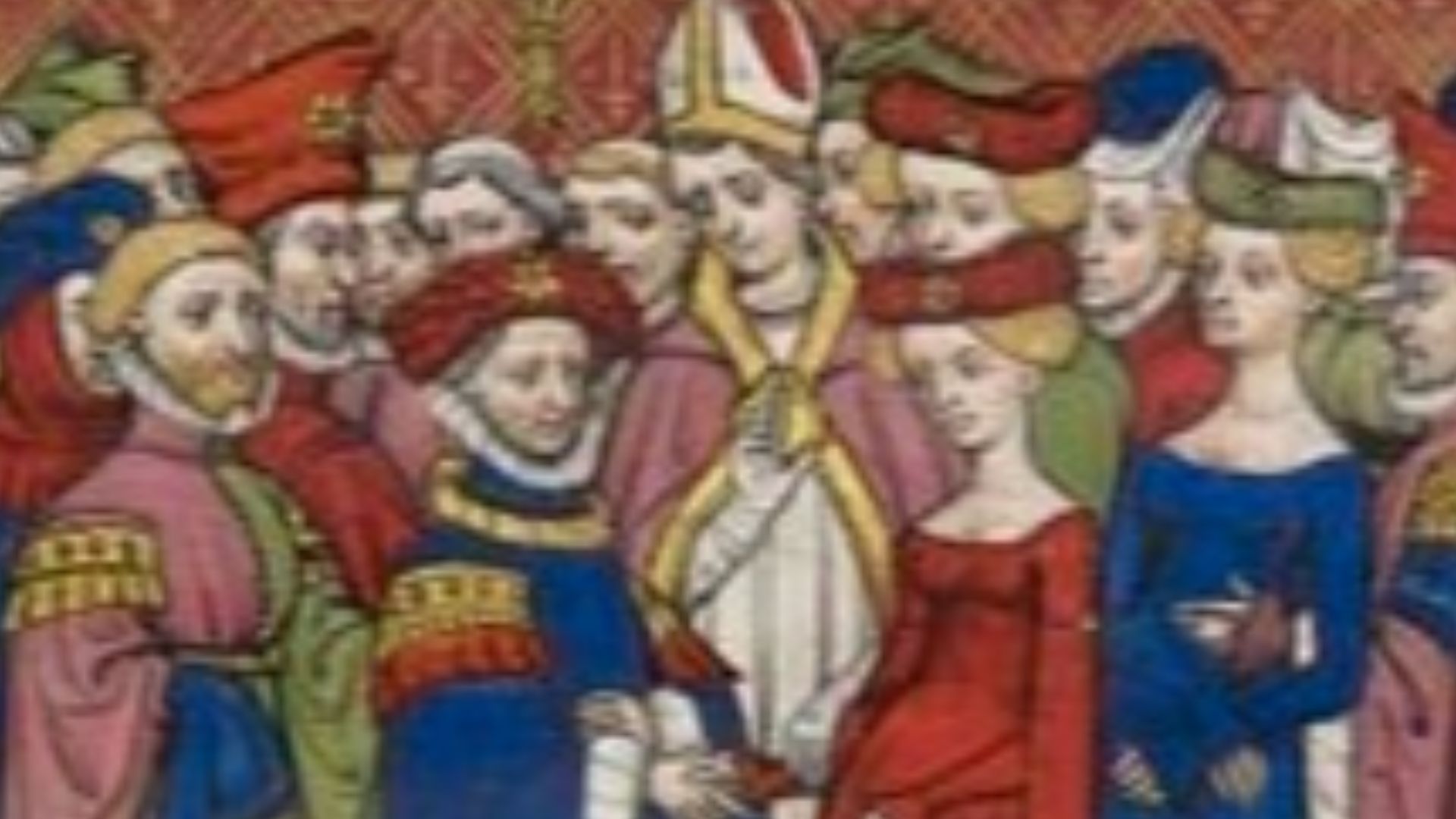 Chroniques de Saint-Denis (1270-1380), Wikimedia Commons
Chroniques de Saint-Denis (1270-1380), Wikimedia Commons
Alchemy And Astrology Were Taught In Universities
Medieval universities taught both astrology and alchemy as legitimate fields. Astrology explored celestial influence on earthly matters, while alchemy aimed to change substances, especially turning metals into gold. Though now dismissed as pseudoscience, these were once respected by scholars.
Students Sometimes Carried Swords To Class
University life could be unruly. Students, often from noble families, carried swords, and clashes between student factions or with townspeople were common. Some towns imposed curfews to manage this violence. Despite the chaos, students attended lectures in Latin and lived under strict, church-enforced rules.
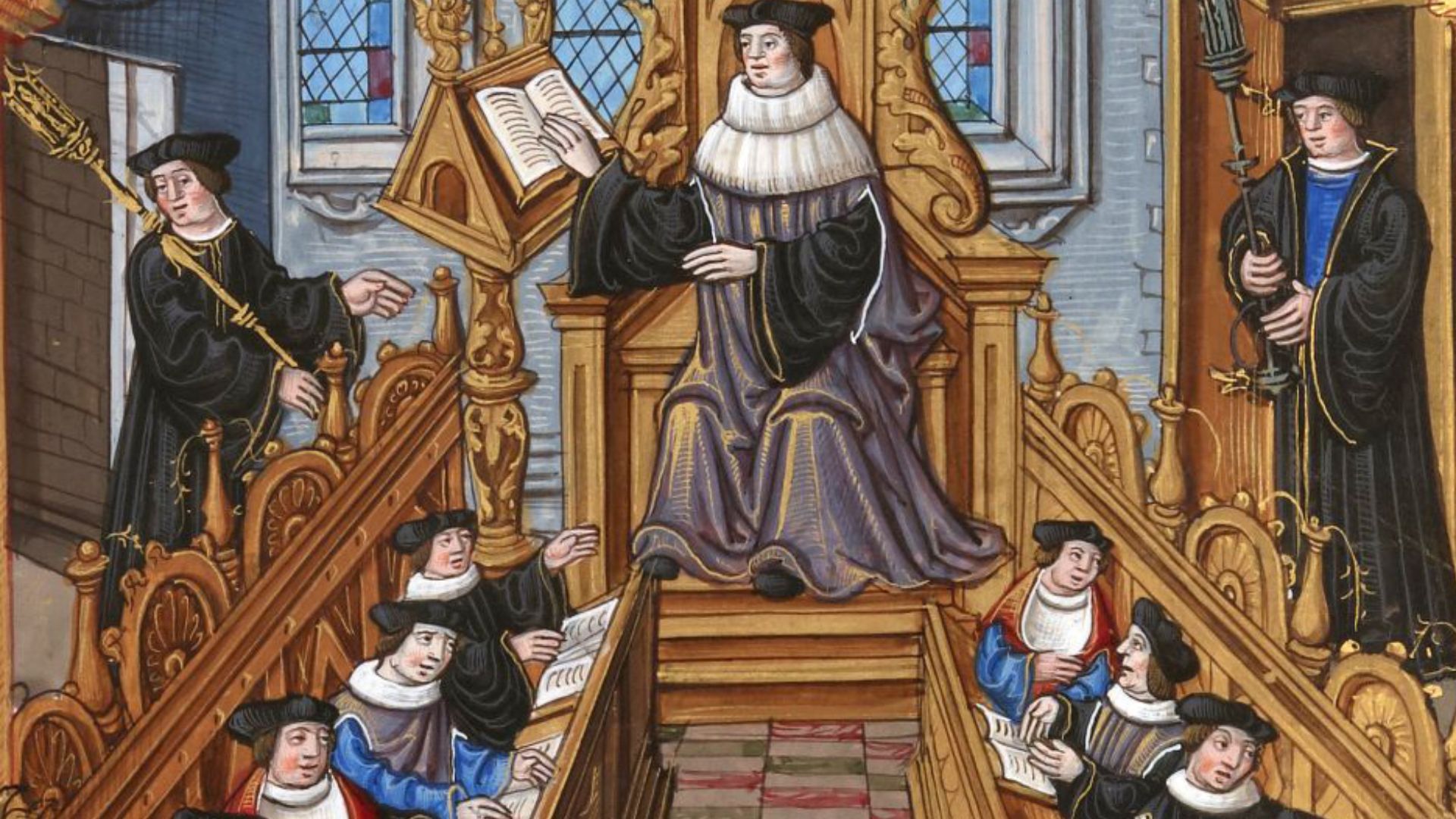 Etienne Colaud, Wikimedia Commons
Etienne Colaud, Wikimedia Commons
Medieval Books Were Made From Animal Skins
Instead of paper, medieval books were made from parchment—animal skins prepared through labor-intensive processes. These pages, often from sheep or goats, were durable and costly. As a result, books were prized possessions, created slowly and reserved for religious or scholarly purposes.
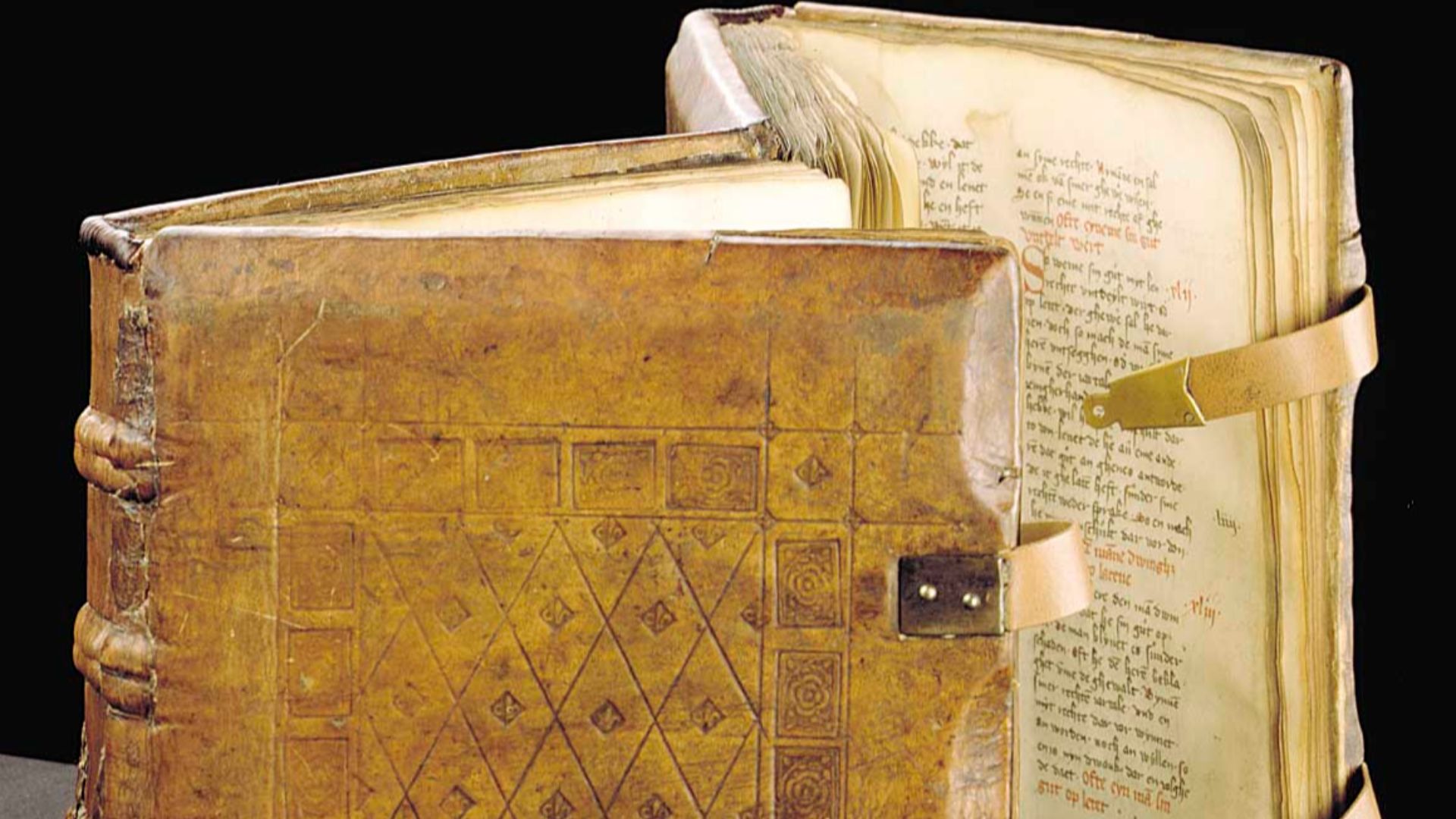 Britta Lauer; Stadtbibliothek Duisburg, Wikimedia Commons
Britta Lauer; Stadtbibliothek Duisburg, Wikimedia Commons
Metal Sewing Needles Were Reserved For The Wealthy
Metal sewing needles were rare and expensive, likely owned by wealthier individuals. Common households relied on thorns or sharpened wood to mend garments. A metal needle, due to its durability and scarcity, was considered a prized possession in any domestic setting.
In Middle Ages" data-title="Metal sewing needles were rare and expensive, likely owned by wealthier individuals. In Middle Ages" class="fr-fic fr-dib" alt="Metal Sewing Needles">The Portable Antiquities Scheme/ The Trustees of the British Museum, CC BY-SA 4.0, Wikimedia Commons Advertisement
Advertisement
Salt Was Extremely Valuable
Salt preserved food before refrigeration, which made it critical for survival. Its scarcity made it a highly valued and traded commodity, often taxed by monarchs. Some towns grew wealthy through salt production and trade, while royal treasuries profited from regulating distribution.
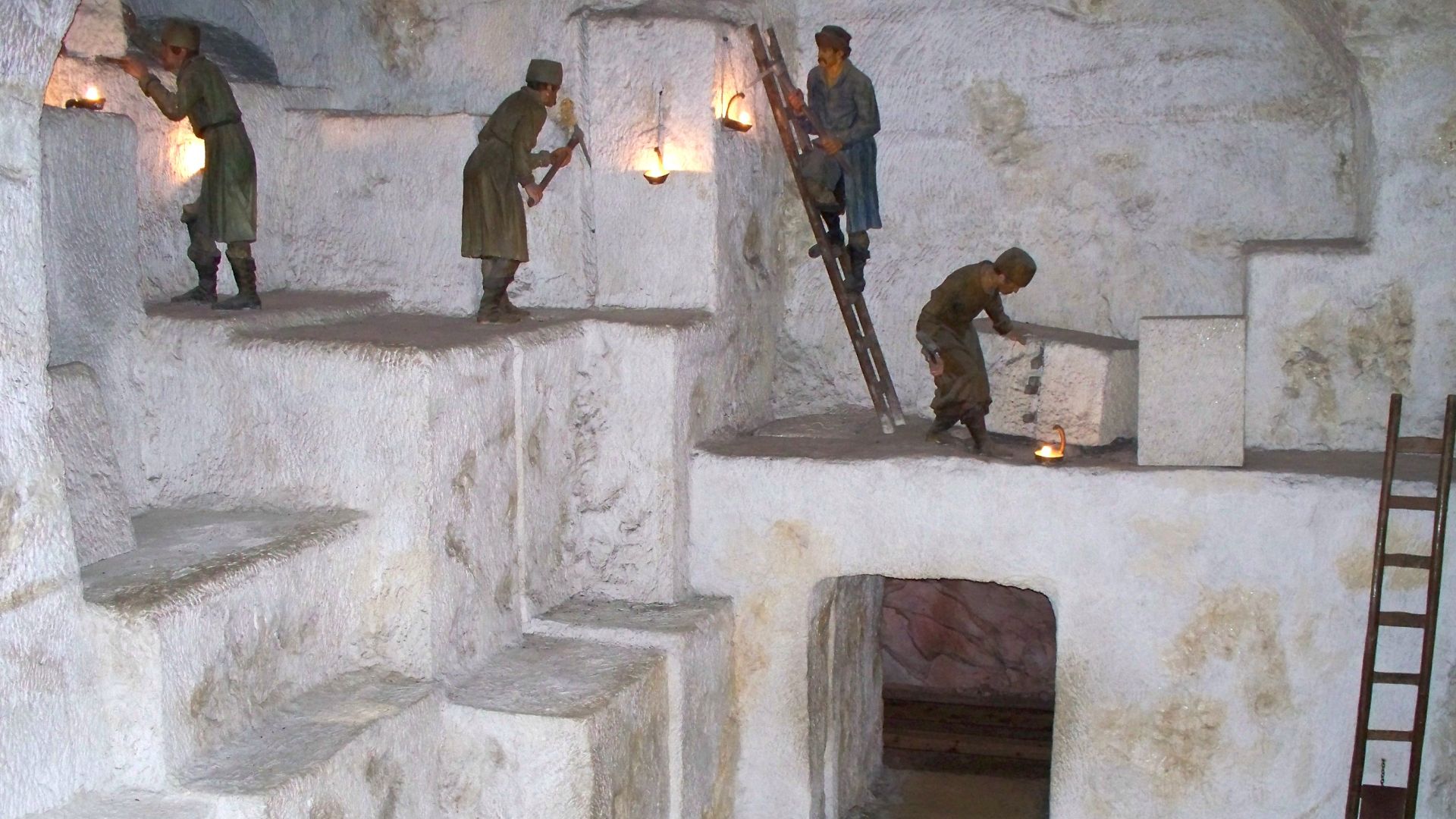 High Contrast, Wikimedia Commons
High Contrast, Wikimedia Commons
Scribes Wrote Texts For Authors
Scribes did the writing, not the authors themselves. Medieval writers usually dictated their words to trained copyists who produced the manuscripts by hand. These scribes sometimes inserted notes or edits, subtly shaping how texts were preserved and influencing the final form that reached readers.
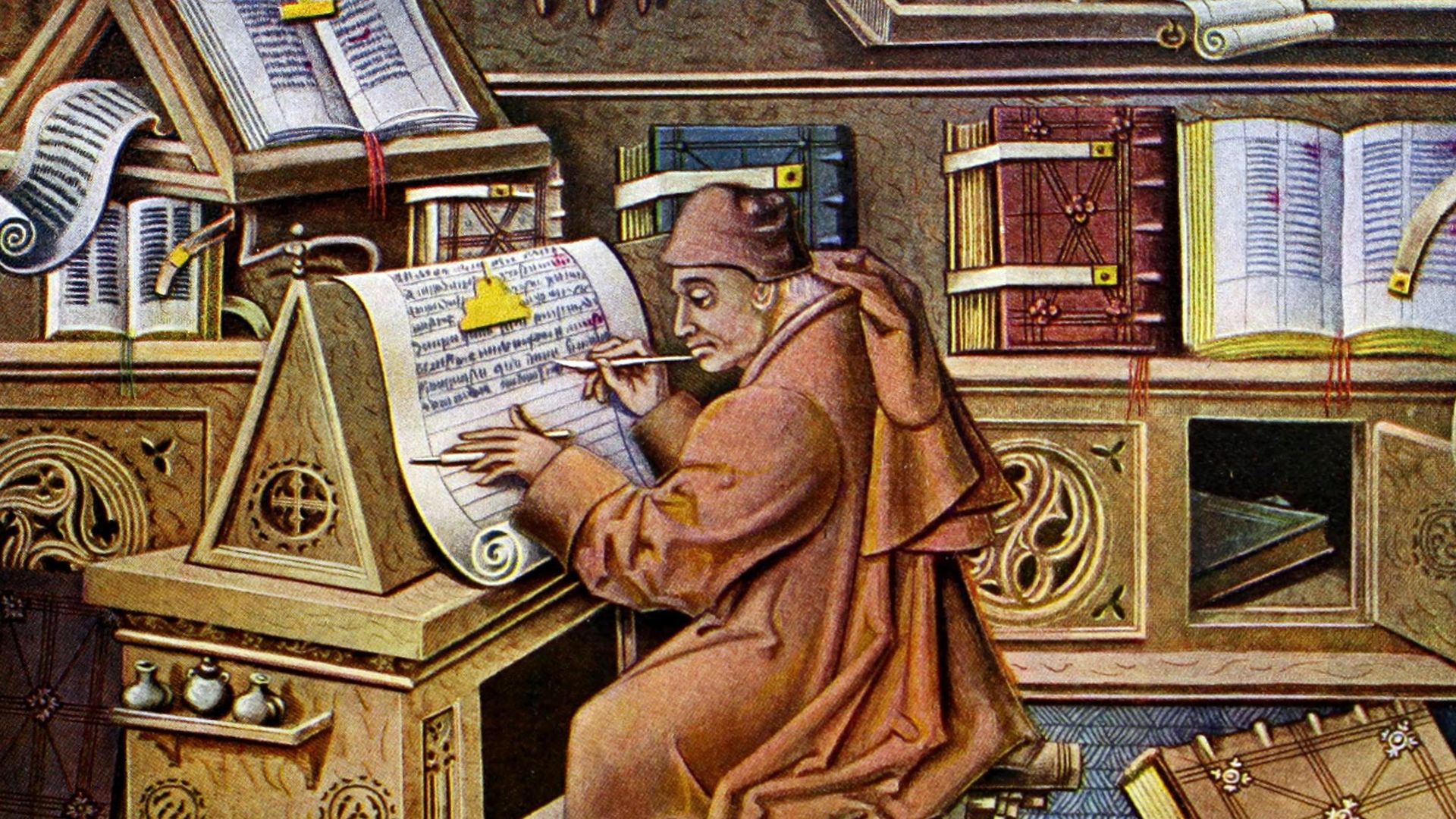 Jean Le Tavernier, Wikimedia Commons
Jean Le Tavernier, Wikimedia Commons

